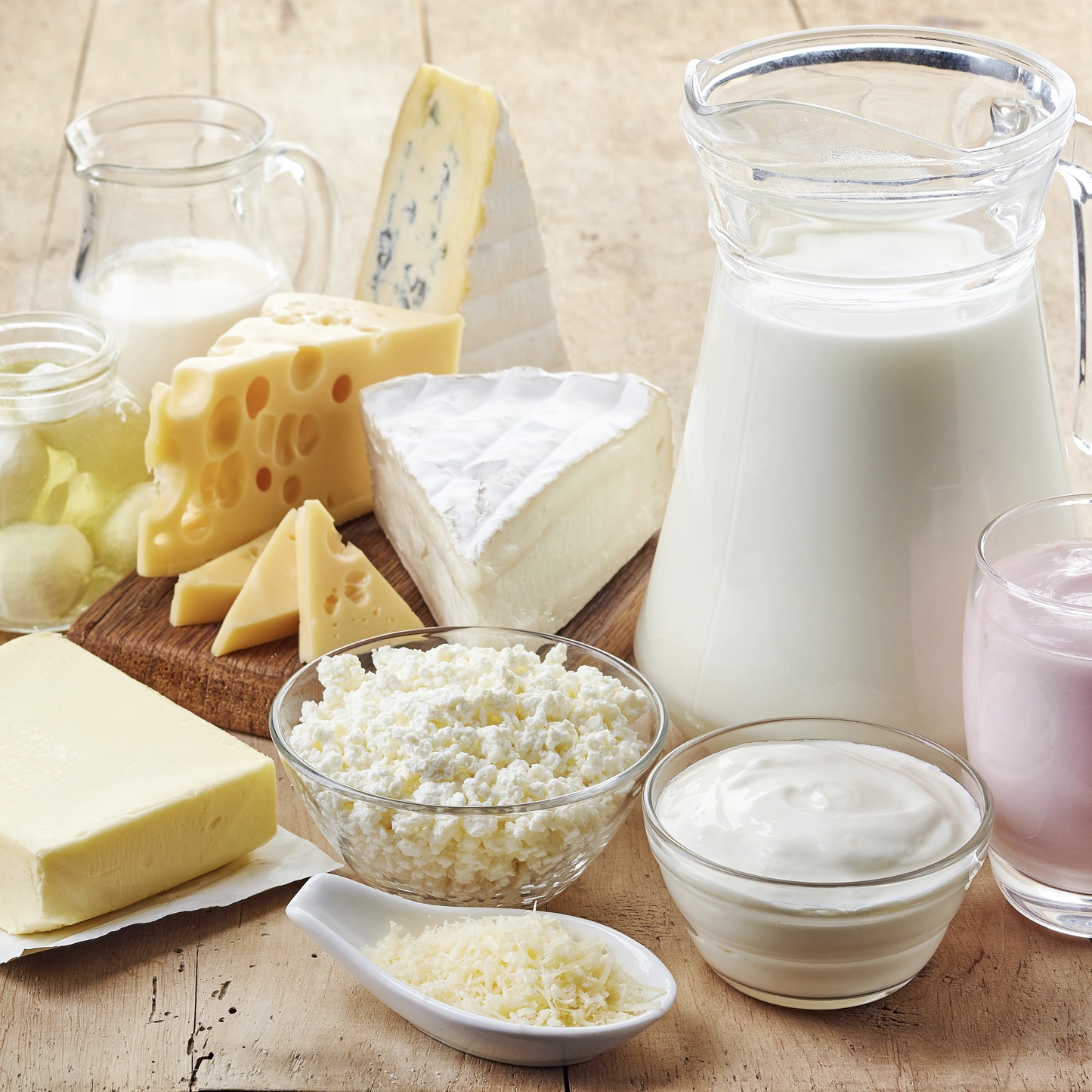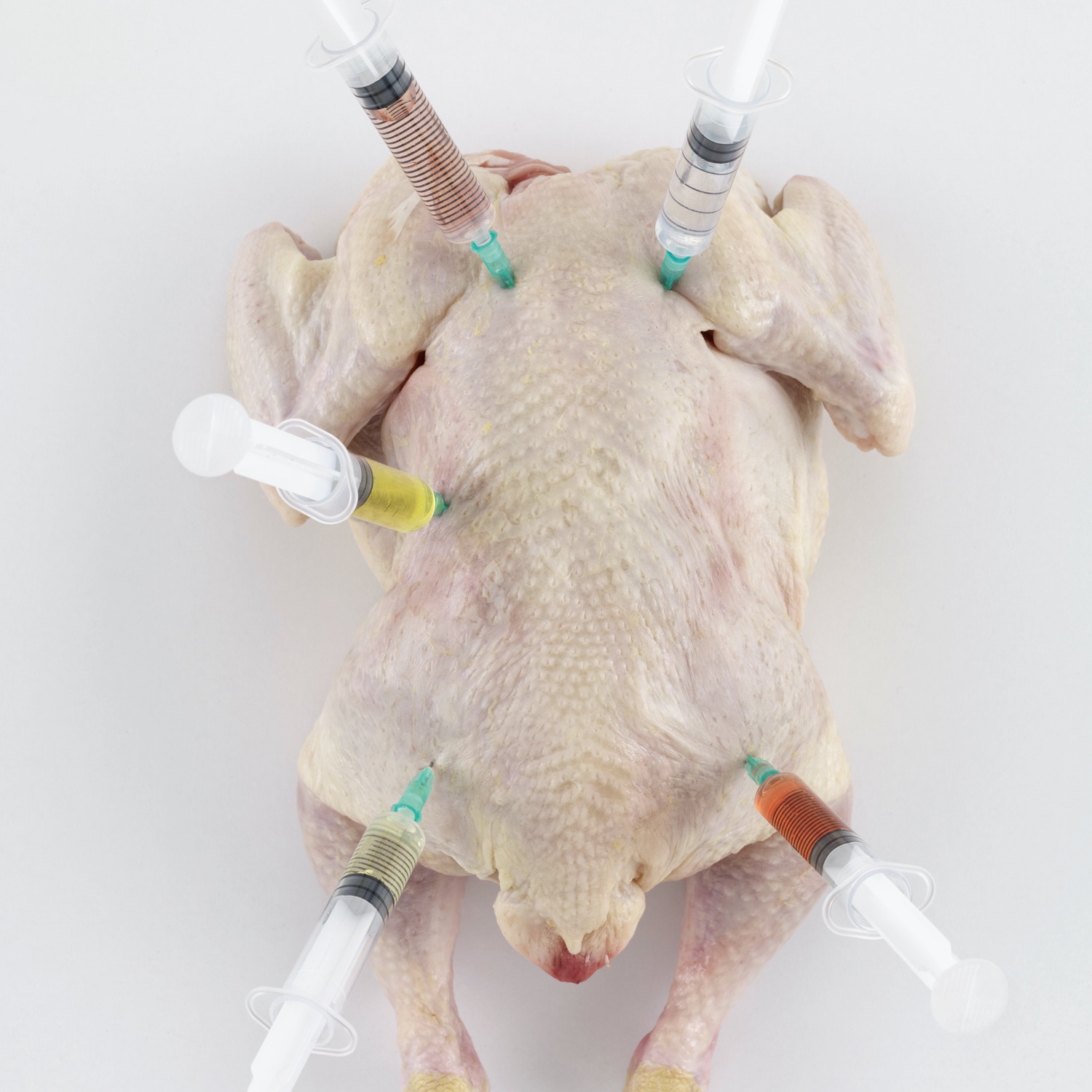Food: First Steps
A Guide for People with Alpha-gal Syndrome
Alpha-gal in Foods
Mammal-Derived Foods and Food Ingredients
Mammalian meat, organs, and other parts of mammals
These include some of the riskiest sources of alpha-gal. Examples include, but are not limited to:
- Mammalian meats (1), such as beef, pork, lamb, bison, venison, goat, horse, rabbit, squirrel, kangaroo, antelope, buffalo, camel, guinea pig, bats, whales, etc.
- If you are not sure which animals are mammals, there is a guide here.
- The internal organs of mammals, like liver (21), lung, heart, intestines (tripe), sweetbreads, and kidneys (6,57)
- Mammalian gut sausage casings
- Mammalian fat, like lard, tallow, and suet
- Mammalian fat is often in cooked foods, such as sauces, pastries, pie crusts, tortillas, tortilla chips, refried beans, baked beans, vegetable dishes, mashed potatoes, and desserts.
- Some baking mixes (like Jiffy Corn Muffin Mix) contain lard.
- Beef fat is often added to fry oil to enhance flavor (6,57).
- Bones and bone marrow
- Testicles (Rocky Mountain or prairie oysters)
- Mammalian collagen (e.g. beef collagen sausage casings) (6,57)
- Meat broth, bouillon, and stock (6,57)
- Gravy (6,57)
- Mammalian blood, found in soups, black pudding, blood sausage, blodplättar, and other foods
- Meat extracts, like Bonox and Bovril
- All other mammalian body parts, organs, tissues, cells, and fluids, such as tendons, brain, heart, nerves, skin, mammalian bile (Papait seasoning), and the products that contain them.
Most of the foods on this list should be avoided by everyone with alpha-gal syndrome. Many of us need to avoid all of them.
Rennet
Rennet is a complex set of enzymes that is used in the manufacture of some foods, such as cheese. Most rennet is extracted from the stomachs of ruminant mammals, although sometimes vegetable and microbial rennets are used. Some people with AGS can eat dairy products, as long as they don’t contain rennet from mammals.
Milk, other dairy products, and foods that contain them as ingredients (1,6,57,115)
Ten to fifty percent or more of people with AGS react to dairy products, especially those high in fat, like ice cream (6,57,85). A list of dairy products can be found here.
Gelatin and foods that contain gelatin (6,27,28,57)
Fewer than 10% of people with AGS react to gelatin in foods, although many more may have severe reactions after other types of exposure to gelatin, such as the intravenous administration of gelatin-based plasma volume expanders or gelatin-containing vaccines administered via intramuscular injections (6,57).
Natural flavors or flavorings
These are often beef or pork (57) and need to be avoided by many people with AGS. To find out whether the “natural flavors” in a product are derived from a mammal, contact the manufacturer. However, in the U.S., manufacturers are under no legal obligation to disclose the identity of ingredients that they call “natural flavors or flavorings.” Often, when asked, they will not disclose whether are derived from mammals or not.
Mammalian byproducts
An untold number of foods, especially processed foods, contain mammalian byproducts. There are hundreds of these byproducts often with obscure names, like oleic acid and monoglycerides. As of now, there is no comprehensive list of mammalian byproducts added to food in the U.S., much less information about their alpha-gal content. Most people with AGS do not react to mammalian byproducts in food, but some do (6,57), and severe reactions have documented (29). Some mammalian byproducts may not contain alpha-gal at all. Further research is needed to determine alpha-gal content and safety of mammalian byproducts for people with alpha-gal syndrome (6,57). See our guide to mammalian byproducts here.
Cross-contamination
Some people with AGS react if their food is cross-contaminated by foods that contain alpha-gal, for example, if their poultry or seafood is cooked on a grill used for red meats (57).
Carrageenan in Food
The food additive carrageenan is made from red algae in the order Gigartinales. Like mammals, these algae glycosylate with alpha-gal, and carrageenan also contains the alpha-gal epitope (54).

Carrageenan
a guide for people with alpha-gal syndrome→
Foods that can contain carrageenan
Foods that can contain carrageenan include, but are not limited to:
- Dulse (Irish Moss, Sea Moss)
- Many dairy products including ice cream; milk shakes, like Dairy Queen blizzards; yogurt; flavored, evaporated, and condensed milk; whipped topping; cheese; and sour cream (76)
- Many dairy-free substitutes (57)
- Desserts, including custard, flan, pudding, mousse, sorbet, gelato, and gel desserts (76,77)
- Drink mixes, such as powdered lemonade (77)
- Juice (76,77)
- Ready to spread icing (76,77)
- Jams and jellies (76,77)
- Candy (76,77)
- Salad dressing, mayonnaise, and relishes (77)
- Poultry and poultry products (77)
- Drinks, such as beer and juice clarified by carrageenan (77)
- Seafood, such as fish treated with carrageenan to improve moisture retention (77)
- Infant formula (77)
- Tofu (77)
Carrageenan as a processing agent
When carrageenan is used as a processing aid, for example when it is used to clarify beer and juice, as a spray on fresh cut fruit, or on fish to aid in retention of moisture, manufacturers are not required to list it on the label.
Other edible red seaweeds
As many red seaweeds contain carrageenan (71), it’s possible that some other forms of edible red algae may also contain the alpha-gal epitope.
Flounder Eggs
The eggs (roe) of some flounder have been found to contain alpha-gal, and can cause severe reactions in people with AGS (26, 104).
- The meat of flounder does not seem to contain alpha-gal or cause reactions in people with AGS (104)
- There is no evidence that other commonly consumed fish eggs (salmon, herring, flying fish, caviar) contain alpha-gal, although its possible that some less commonly consumed fish eggs might, as alpha-gal has been found in the eggs of other teleost (bony) fish (58,74).
Other Foods That May or May Not Be a Source of Alpha-gal
Limited data and/or anecdotal evidence suggest that some foods that do not obviously contain mammal or red algae derived ingredients can cause reactions in some people with AGS for reasons that aren’t clear. These include:
Food-Related Risks
Determining Your Tolerance for Alpha-gal
Seek your healthcare provider’s advice about which foods you should and should not eliminate from your diet. If your physician approves, the following steps may help you:
Step #1: Remove the riskiest foods (meats, organs, etc.) and any other foods that you know you react to from your diet.
Step #2: Learn about the relative risks of other foods that contain alpha-gal (see below).
Step #3: With the advice of your doctor, cautiously work to determine your personal tolerance for different foods that contain alpha-gal. See Determining Your Tolerance to Alpha-gal: First Steps for more information.
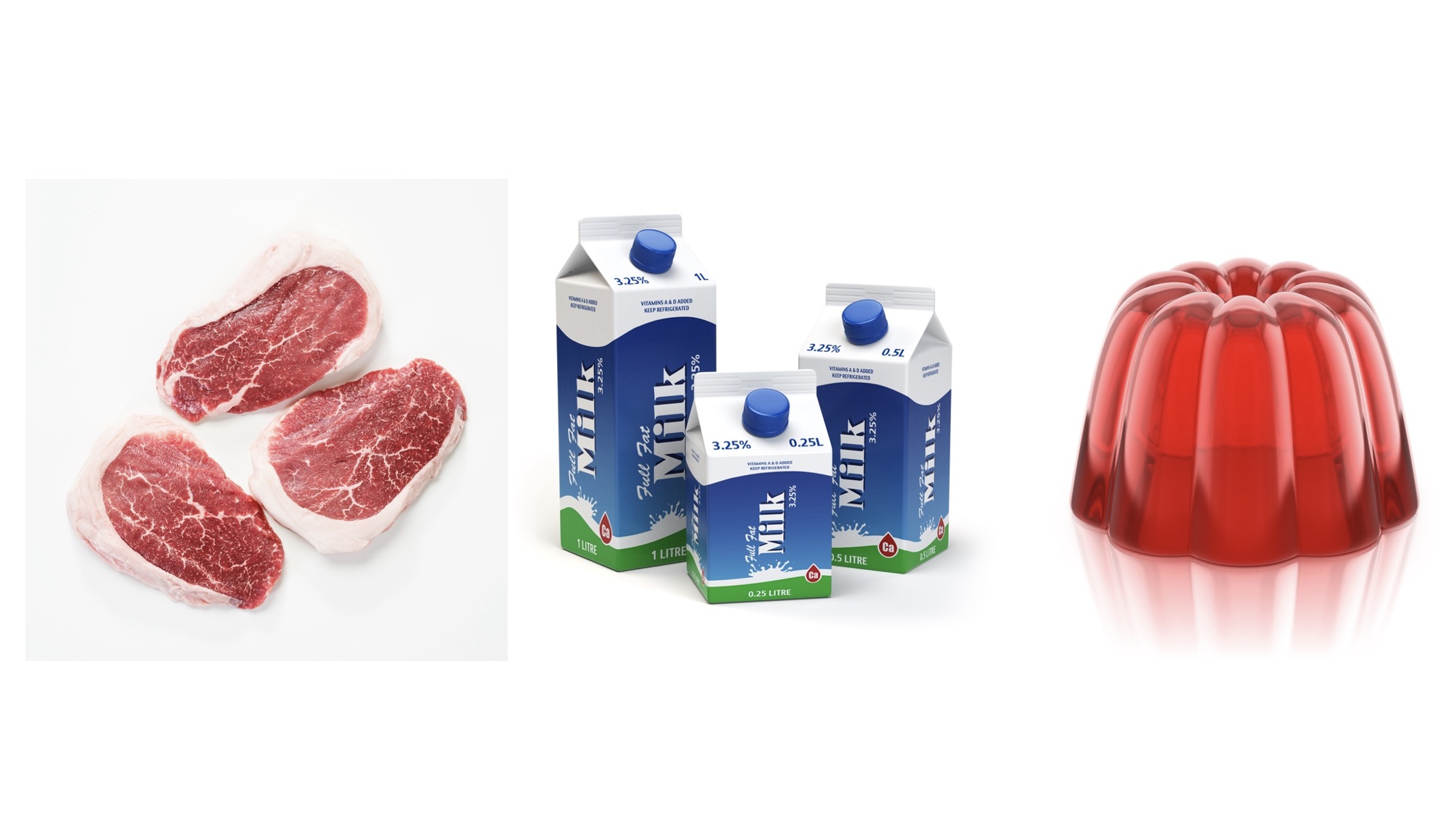
Determining Your Tolerance to Alpha-gal: First Steps
A Guide for People with Alpha-gal Syndrome
The Spectrum of Risk
Many foods contain alpha-gal. Some need to be avoided by everyone with alpha-gal syndrome (AGS); others are tolerated by most of us (57). At one end of the spectrum are the internal organs of mammals, like intestines and pork kidneys. Organs can be so high in alpha-gal content that they can even trigger anaphylaxis in people who do not have reactions after eating mammalian meat (24,59). In other words, some people sensitized to alpha-gal never have a reaction until they eat an organ like a pork kidney. At the other end of the spectrum are hundreds of mammalian byproducts. The alpha-gal content of most of these byproducts is unknown (57), and most people with AGS tolerate most of them.
The Variability of Risk
One of the hallmarks of alpha-gal syndrome is the variability of alpha-gal allergic reactions (57). This variability needs to be taken into account when assessing the risks that different foods and other exposures to alpha-gal may pose.
Reactions vary from person to person (57)
- Some people tolerate all foods except for mammalian meat and organs.
- Other people react to milk and dairy products, gelatin, and/or carrageenan.
- A minority of people with AGS react to trace amounts of alpha-gal.
With each individual, reactions can vary dramatically from exposure to exposure (57)
- A distinctive feature of AGS is that for many people, reactions don’t occur after every exposure, but when they do occur, they are often severe.
- For example, some people with AGS can eat a hamburger every day for months without reacting; then one day, they eat one and have a life-threatening allergic reaction.
- This variability is due in part to co-factors, like alcohol consumption, exercise, the use of NSAIDs (like Advil), illness, infection, stress, lack of sleep, and menses (your period) (57).
Reactions change over time (57).
- Variability over the long-term can be influenced by your exposure to ticks (57).
- If you avoid ticks, your alpha-gal IgE may decrease over time (91), and you may become less reactive (57).
- If you are bitten by ticks again, your alpha-gal IgE will likely increase (20), and you may find you cannot eat foods you previously tolerated. In addition, your reactions may become more severe (57). Some people develop a sensitivity to airborne alpha-gal, like fumes from cooking meat, after new tick bites.

Reproduced from: Platts-Mills TA, Li RC, Keshavarz B, Smith AR, Wilson JM. Diagnosis and management of patients with the α-Gal syndrome. The Journal of Allergy and Clinical Immunology: In Practice. 2020 Jan 1;8(1):15-23, with permission from Elsevier.
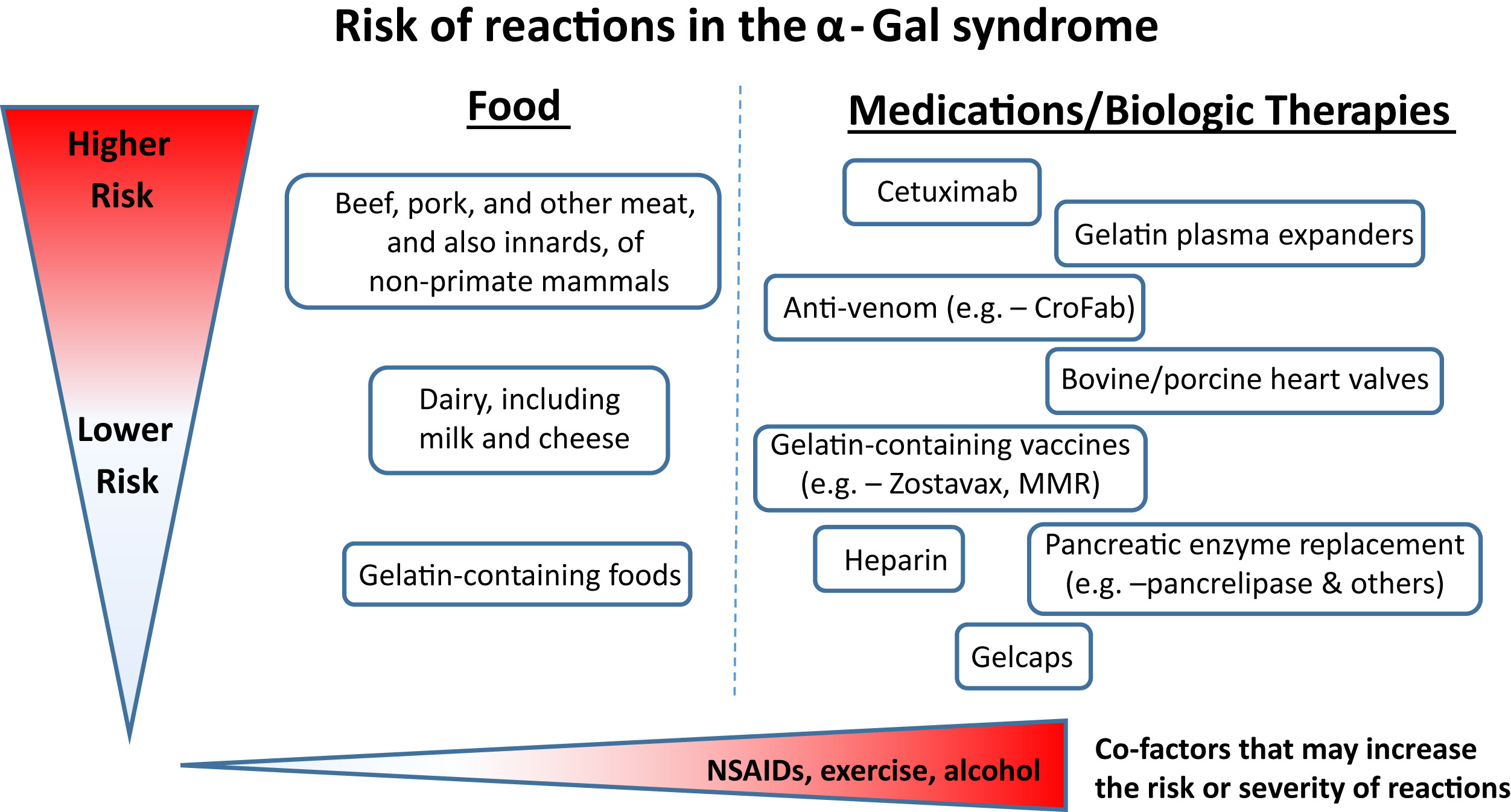
Figure 1. The risk and also severity of reactions in the α-Gal syndrome relate to the amount of the oligosaccharide that is present in food, drugs, or other therapeutics. The route of administration is relevant to the speed at which reactions occur; that is, intravenous administration is associated with rapid reactions, whereas oral ingestion has delayed onset. Cofactors such as NSAIDs, exercise, and alcohol can be additional risk modifiers. This schematic reflects clinical experience, as well as challenge studies and laboratory investigations. CroFab, Crotalidae polyvalent immune Fab; MMR, measles, mumps, and rubella; NSAID, Nonsteroidal anti-inflammatory drug.
Reproduced from: Platts-Mills TA, Li RC, Keshavarz B, Smith AR, Wilson JM. Diagnosis and management of patients with the α-Gal syndrome. The Journal of Allergy and Clinical Immunology: In Practice. 2020 Jan 1;8(1):15-23, with permission from Elsevier.

Mammalian organs
(kidney, liver, lung, intestines, heart, etc.)

Mammalian sausage casings
(gut or collagen casings, even on poultry sausages)

Lard
(in refried beans, vegetables, baked goods, tortillas, chips, foods fried in lard, etc.)
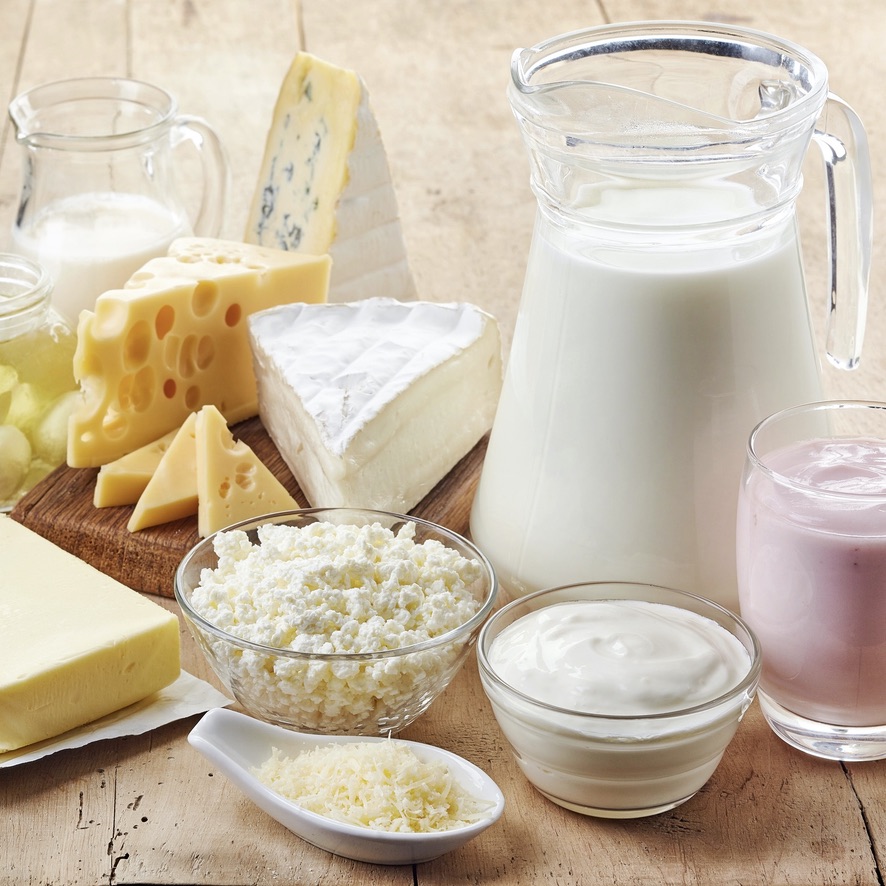
Dairy products
(milk, cheese, yogurt, butter, etc.)

Gelatin in foods*
(Jello, gummy bears, marshmallows, gummy supplements, etc.)
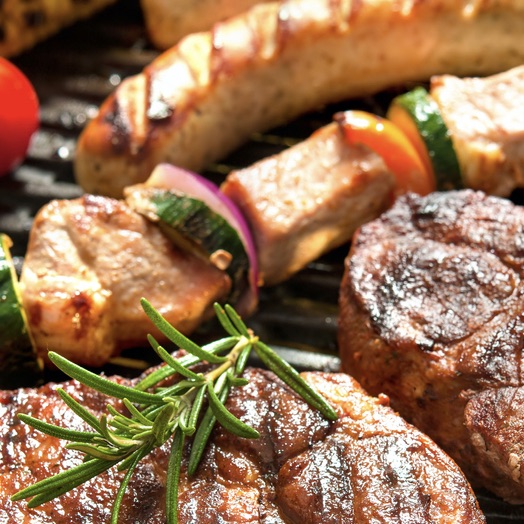
Cross-contamination
(from splattering fat, grills, pans, food prep surfaces, etc.)
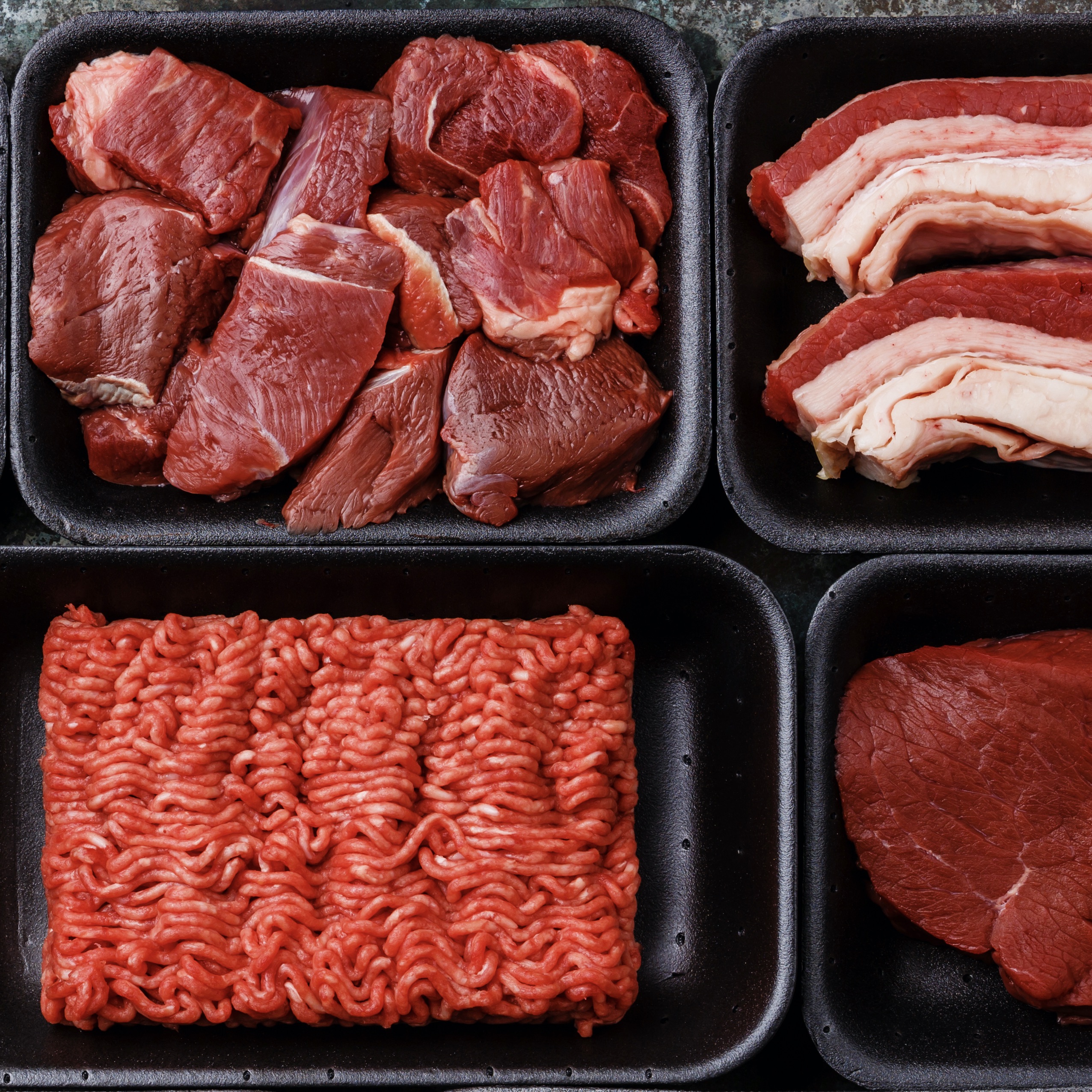
Mammalian meat
(skeletal muscle, such as beef, pork, lamb, etc.)

Flounder roe (eggs)
(Not all fish roe contains alpha-gal).

Mammalian broth and gravy
(often added to flavor dishes, injected into poultry, etc.)
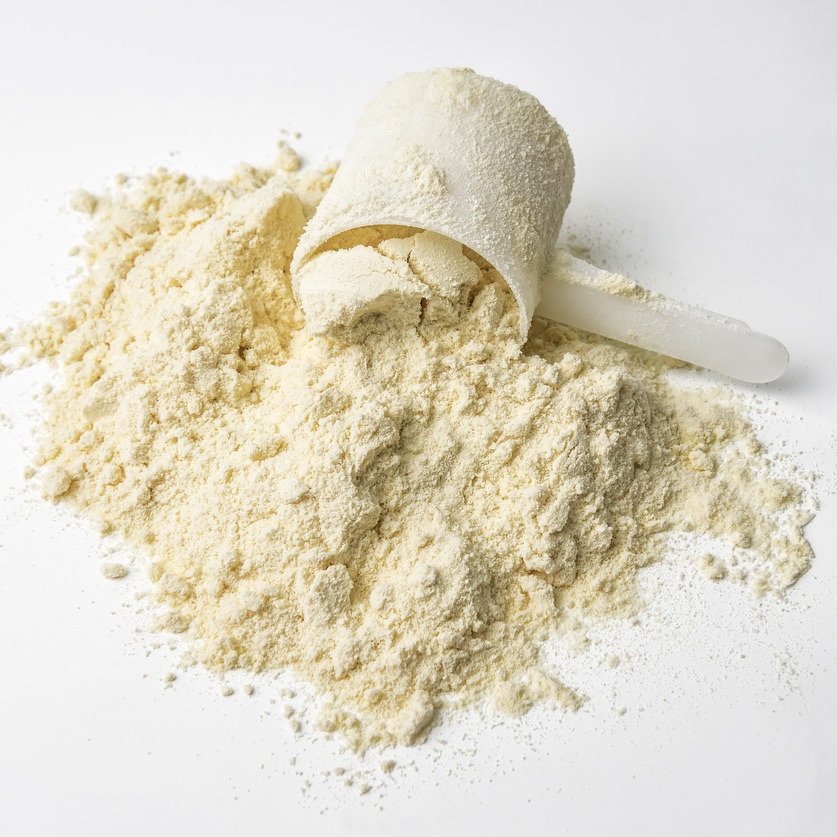
Whey
Often in protein powders but also added to many other foods.
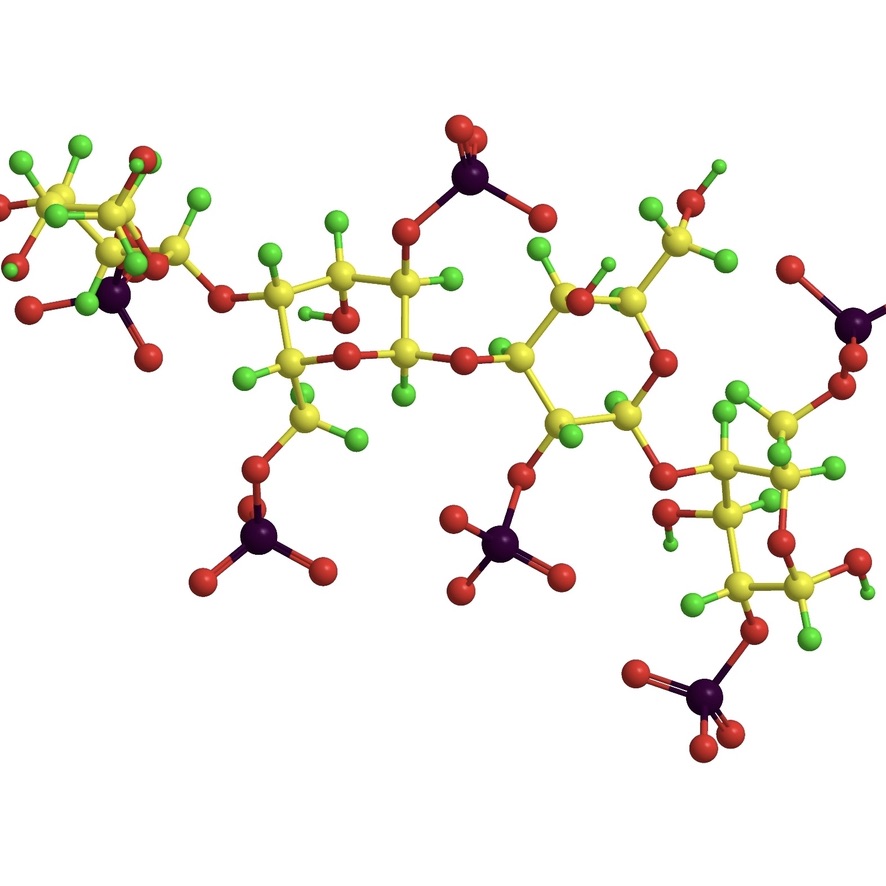
Carrageenan in foods*
(in dairy products, dairy-free dairy substitutes, poultry products, and many other products)

Mammalian Byproducts in foods*
(mono- and di- glycerides, lanolin-derived vitamin D3, etc.)
Highest risk: avoidance recommended for all people with AGS
→ → → → →
Lower risk: caution advised*
Highest risk foods trigger reactions in the most people and tend to trigger the most severe reactions. Lower risk foods trigger reactions in the fewest people and are less likely to trigger severe reactions. Keep in mind that some people who are highly reactive to alpha-gal have severe reactions even to the least risky foods.
*When used in medical products, risks may be significantly higher, especially in the case of parenterally administered gelatin.
Food-Related Risks by the Numbers
*Some people who are sensitized to alpha-gal but do not react after eating meat or organs may react after exposure to some medical products that contain alpha-gal.
**Many people who tolerate gelatin in foods without experiencing any reactions may have severe reactions after other types of exposure to gelatin, such as the intravenous administration of gelatin-based plasma volume expanders or gelatin-containing vaccines administered via intramuscular injections (6,57).
***There is a lack of data on the risks of medical products that contain carrageenan to people sensitized to alpha-gal.
†There is a lack of data on the alpha-gal content of many mammalian byproducts and the risks of medical products that contain them (6,57).
To learn more about the relative risks of foods that contain alpha-gal and how to figure out your own, personal tolerance for different foods, see Determining Your Tolerance to Alpha-gal (coming soon).
The Riskiest Foods: Mammalian Meat, Organs, Tissues, and Fluids
Don’t play Russian roulette!
Stop eating mammalian meat, organs, and other high risk foods!

Alpha-gal is found in the meat, organs, tissues, cells, and fluids of all mammals except for humans, great apes, and Old World monkeys (1). It is also found in products made from them. Some of the riskiest sources of alpha-gal in food include, but are not limited to:
- Mammalian meats (1), such as beef, pork, lamb, bison, venison, goat, horse, rabbit, squirrel, kangaroo, antelope, buffalo, camel, guinea pig, bats, whales, etc.
- If you are not sure which animals are mammals, there is a guide here.
- The internal organs of mammals, like liver (21), lung, heart, intestines (tripe), sweetbreads, and kidneys (6,57)
- Mammalian gut sausage casings
- Mammalian fat, like lard, tallow, and suet
- Mammalian fat is often in cooked foods, such as sauces, pastries, pie crusts, tortillas, tortilla chips, refried beans, baked beans, vegetable dishes, mashed potatoes, and desserts.
- Some baking mixes (like Jiffy Corn Muffin Mix) contain lard.
- Beef fat is often added to fry oil to enhance flavor (6,57).
- Bones and bone marrow
- Testicles (Rocky Mountain or prairie oysters)
- Mammalian skin (like pork rinds and ponmo)
- Mammalian collagen (e.g. beef collagen sausage casings) (6,57)
- Meat broth, bouillon, and stock (6,57)
- Gravy (6,57)
- Mammalian blood, found in soups, black pudding, blood sausage, blodplättar, and other foods
- Meat extracts, like Bonox and Bovril
- All other mammalian body parts, organs, tissues, cells, and fluids, such as tendons, brain, lungs, heart, nerves, skin, mammalian bile (Papait seasoning), and the products that contain them.
Most of the foods on this list should be avoided by everyone with alpha-gal syndrome. Many of us need to avoid all of them. Refer to the above figure and table for more information.
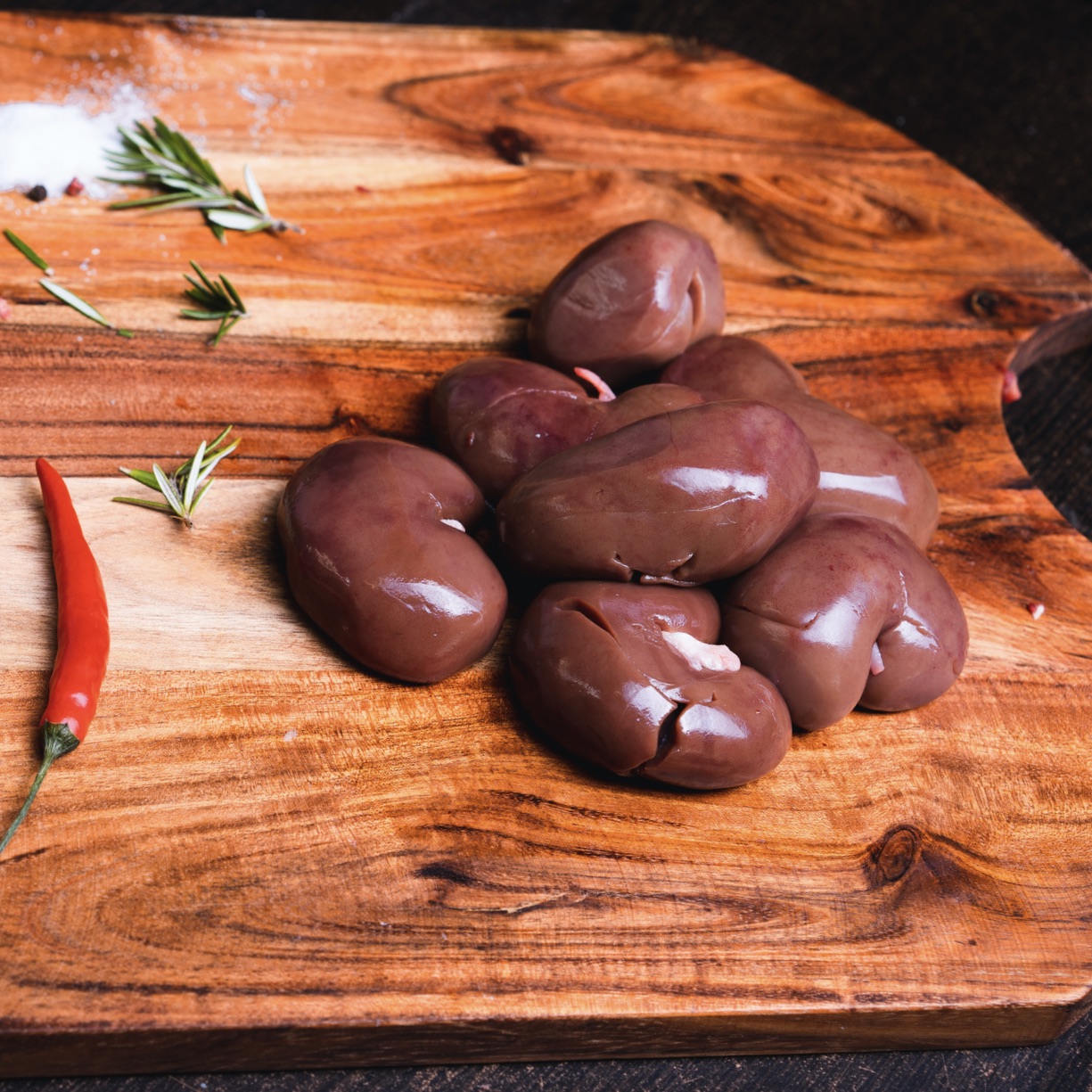
Kidneys
Kidneys are one of the most dangerous foods for people with AGS!

Tripe (mondongo)
Tripe is made from the stomach of mammals.

Sweetbreads
Sweetbreads are the thymus and pancreas of mammals.
Examples of mammalian meats, organs, and tissues
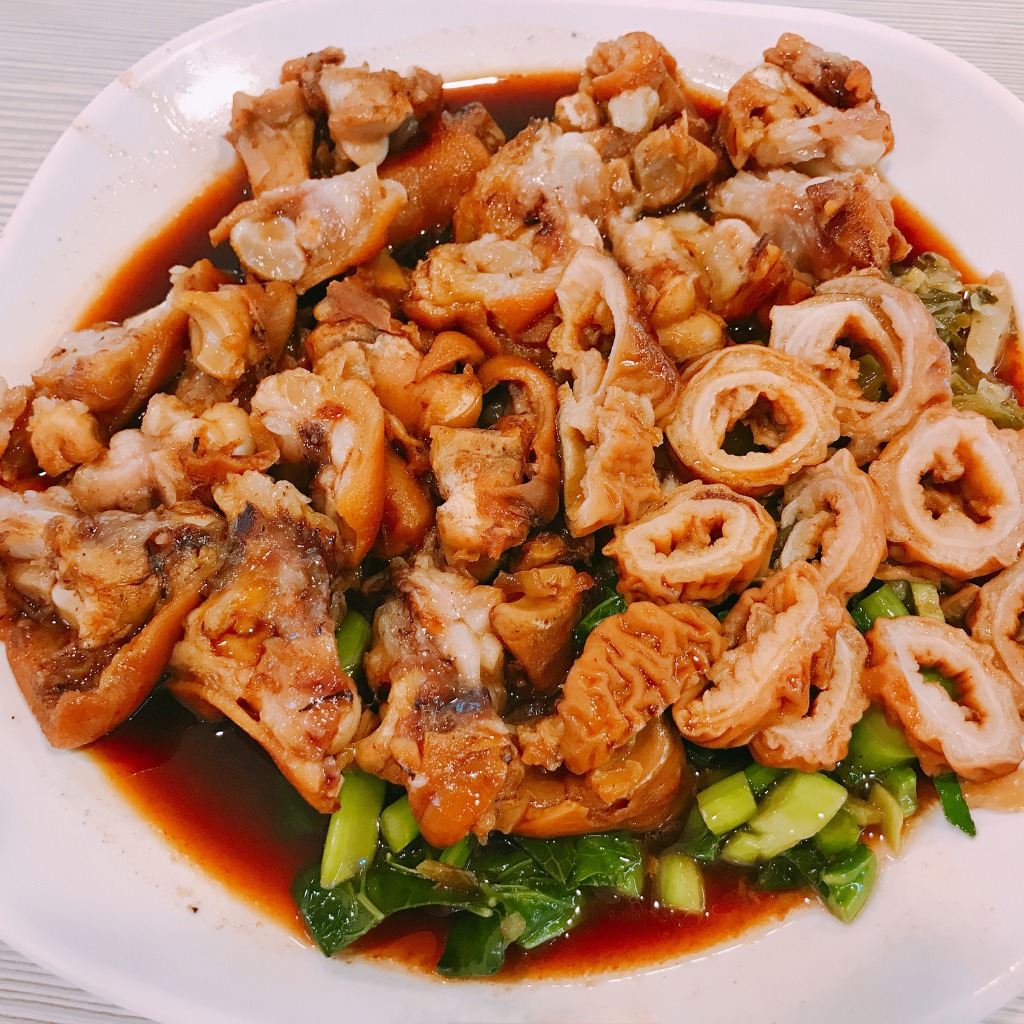
Chitterlings (tripas)
Chitterlings are made from pork intestines.
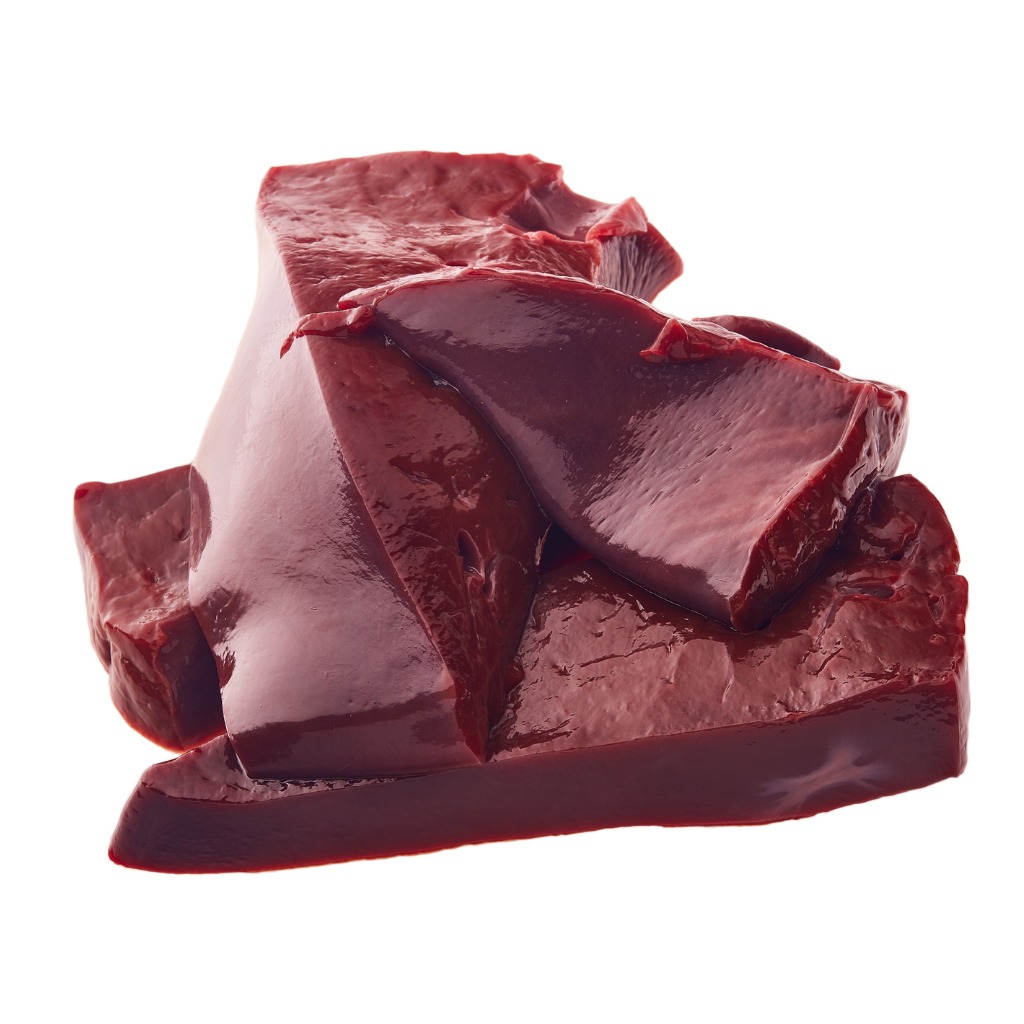
Liver

Sausages
Even turkey and chicken sausages often have casings made from mammalian intestines.
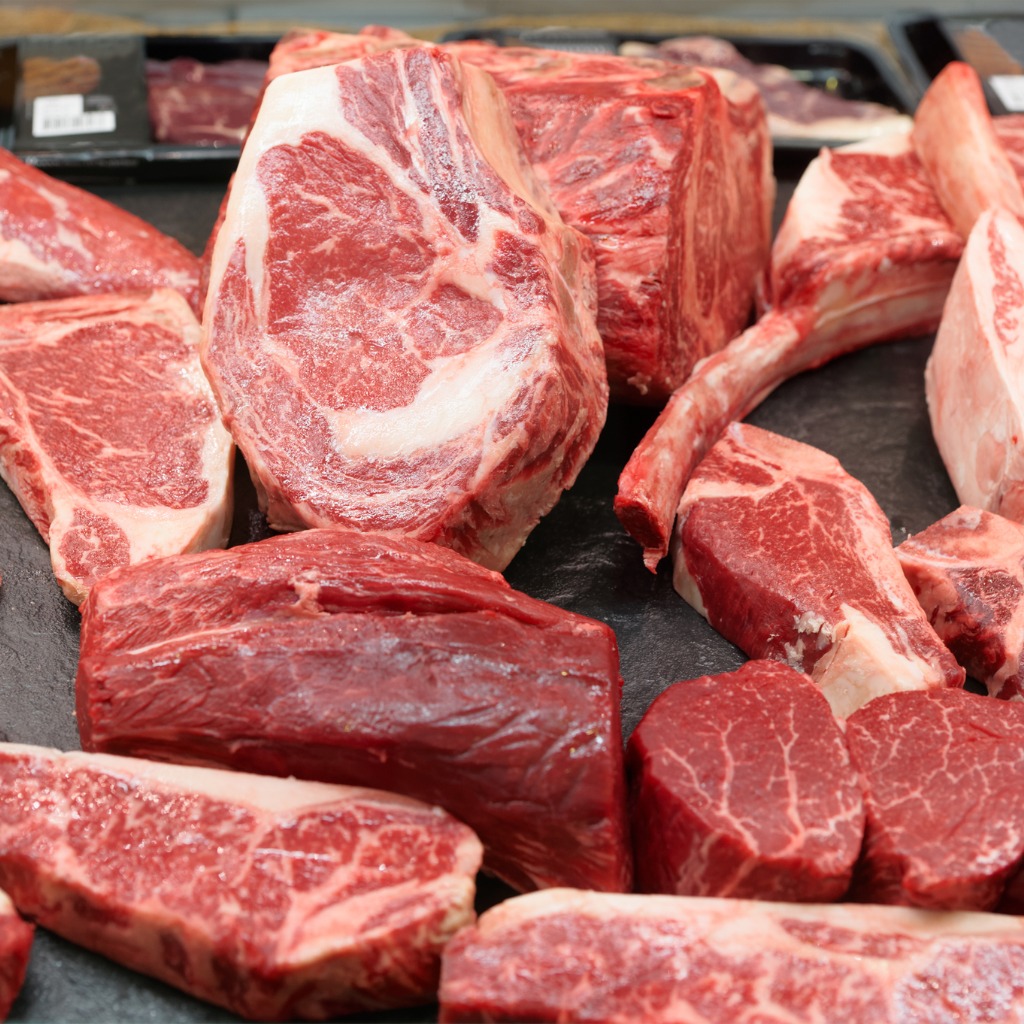
Beef
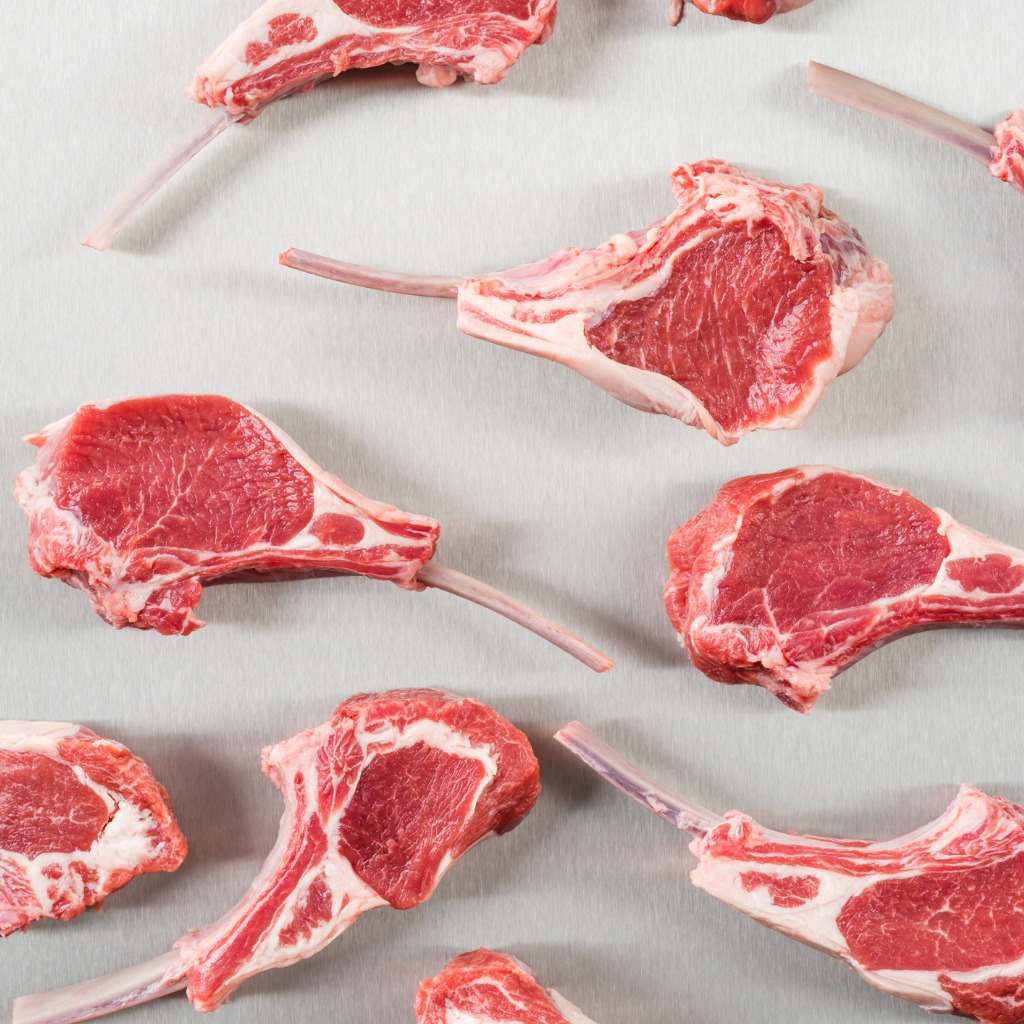
Lamb
Lamb and mutton are from sheep.
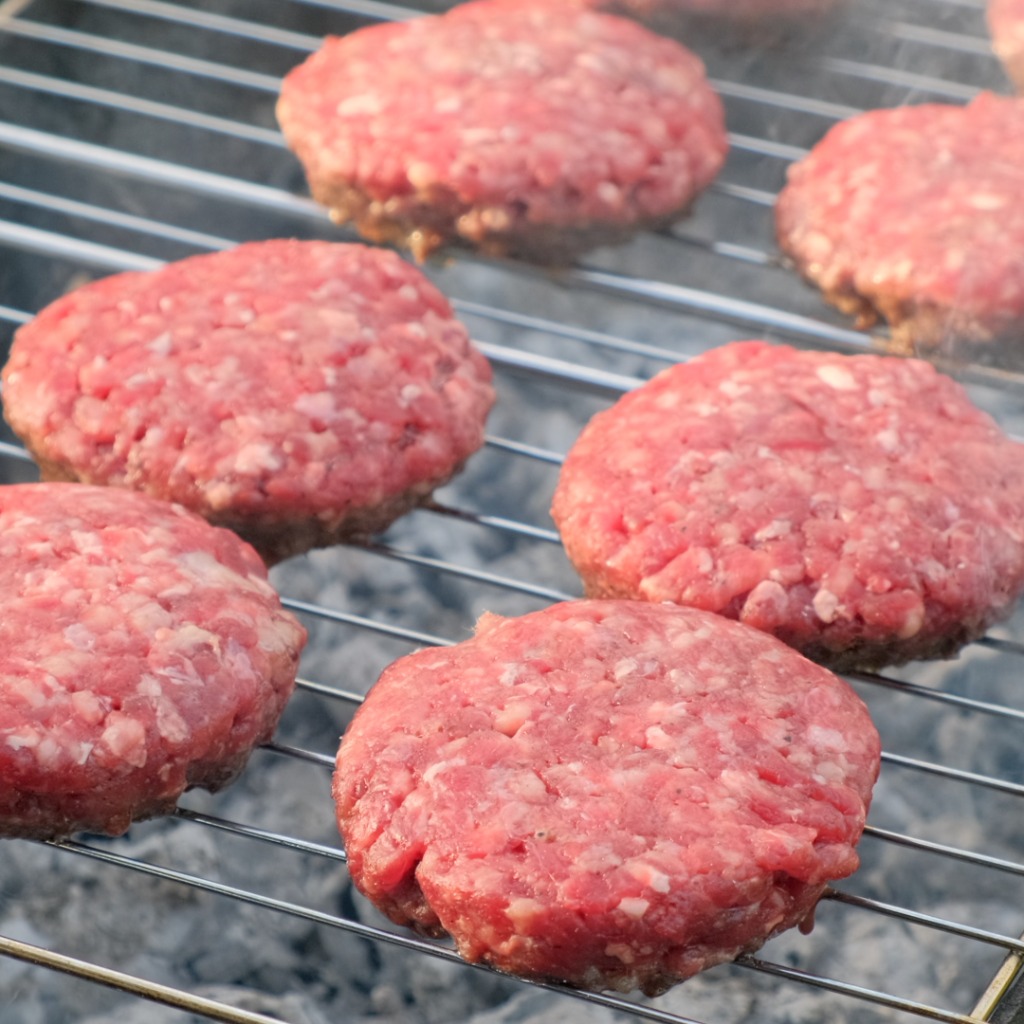
Hamburgers
Beef, lamb, pork, and other mammalian burgers
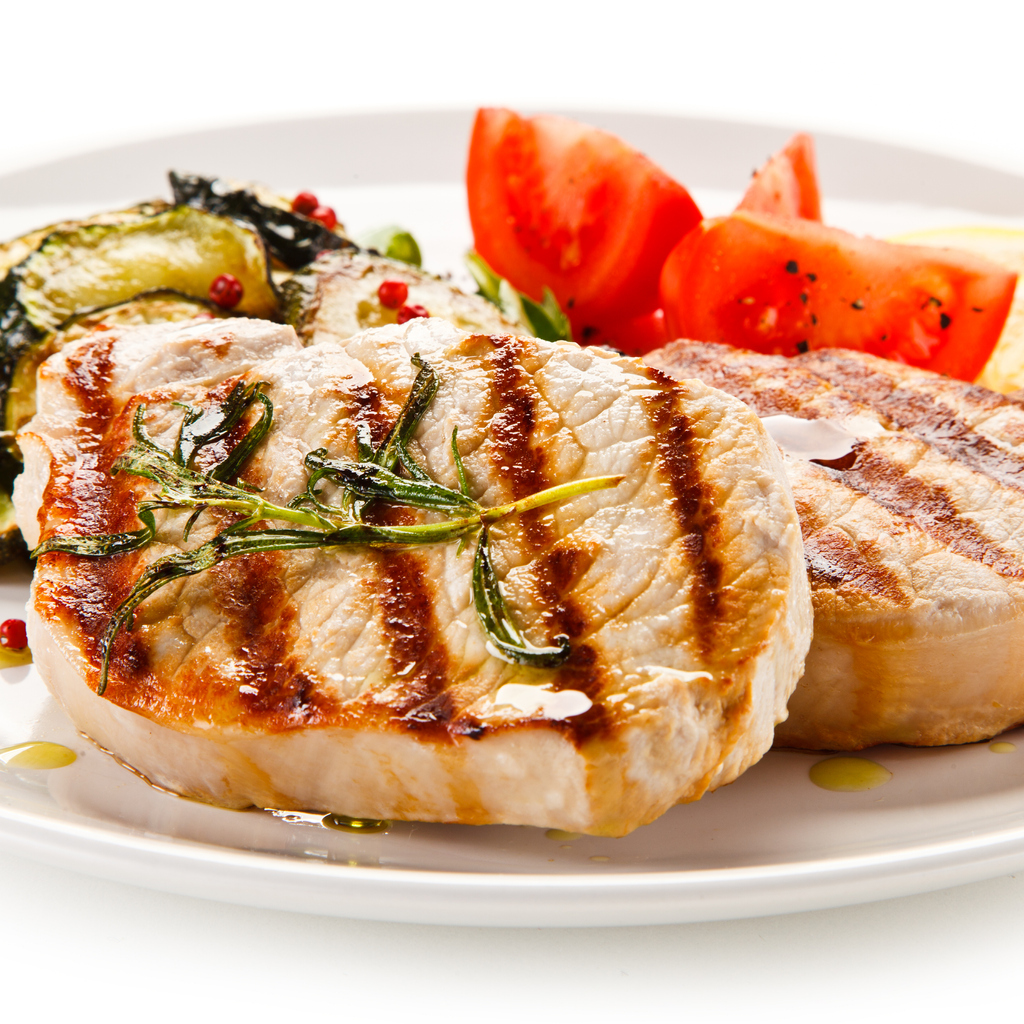
Pork
Pork might be called “the other white meat,” but pigs are mammals.
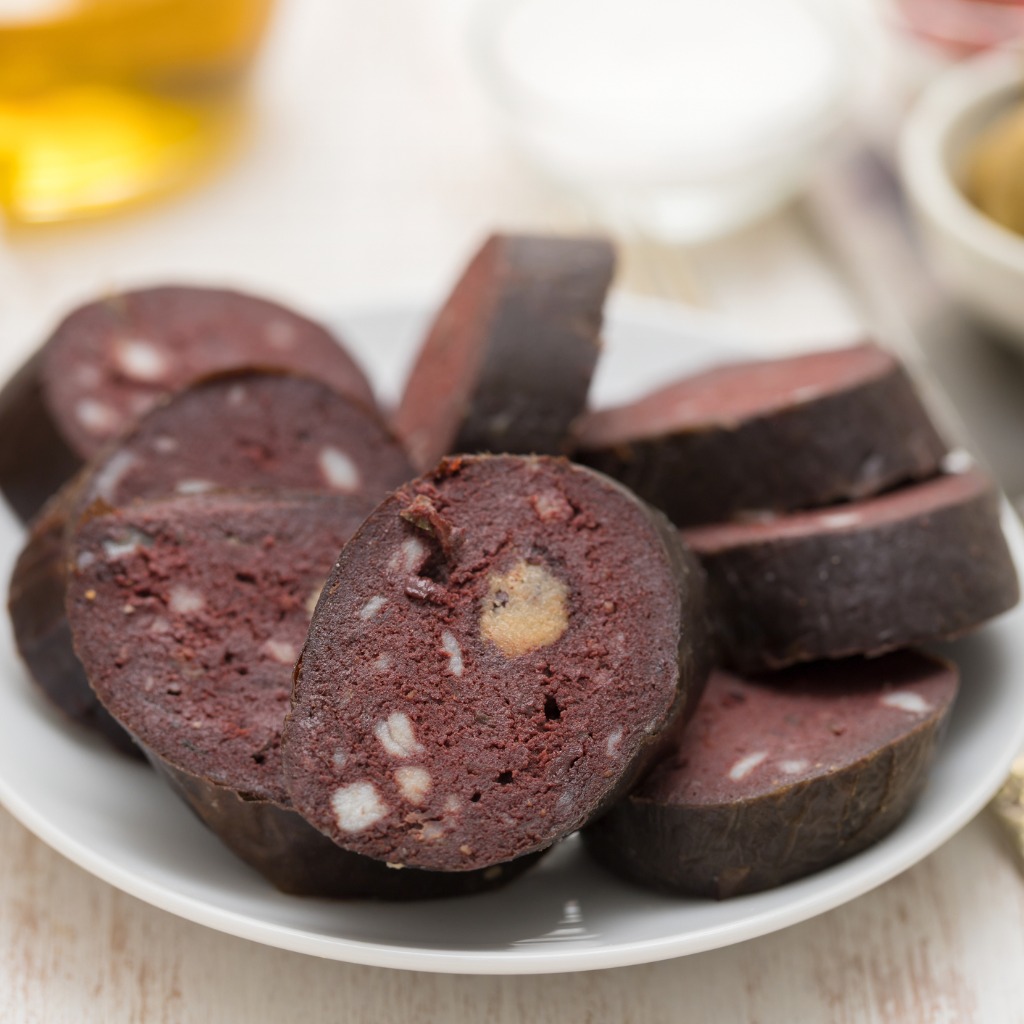
Blood
Foods from many cuisines contain blood, such as this blood sausage from Portugal.
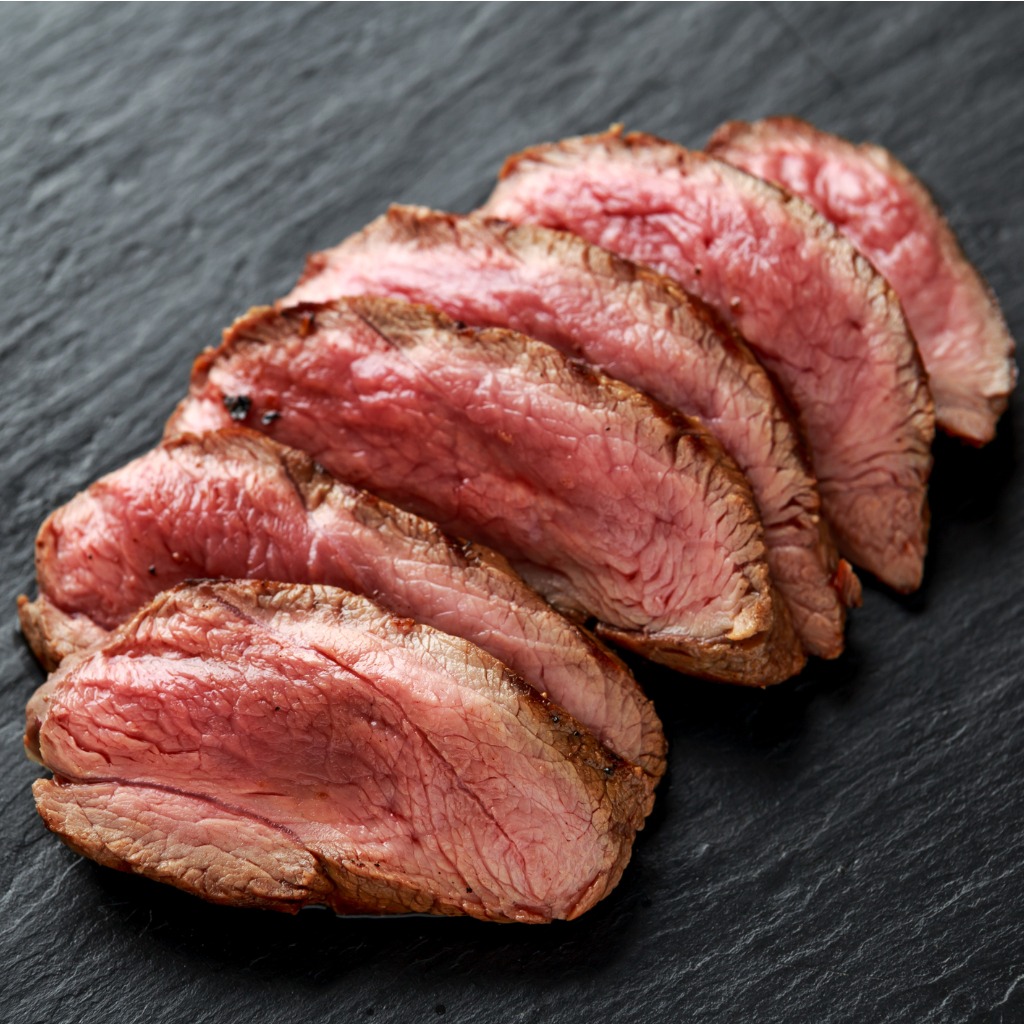
Venison
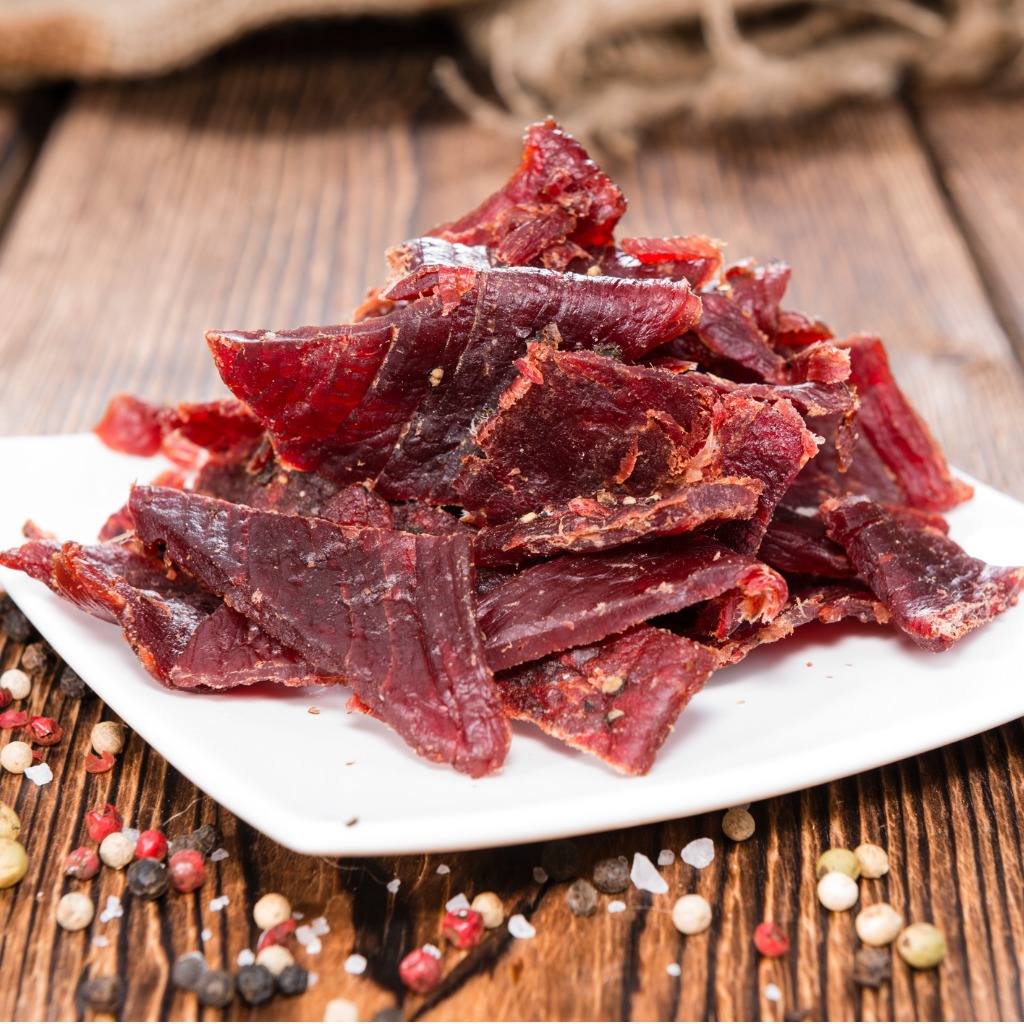
Jerky
Beef jerky, buffalo jerky, biltong, and other kinds of dried mammalian meat

Pork rinds
Pork rinds are made from pig skin.

Ponmo
Ponmo is made from cow skin.

Pork bacon

Pork lard

Mammalian bones and bone marrow
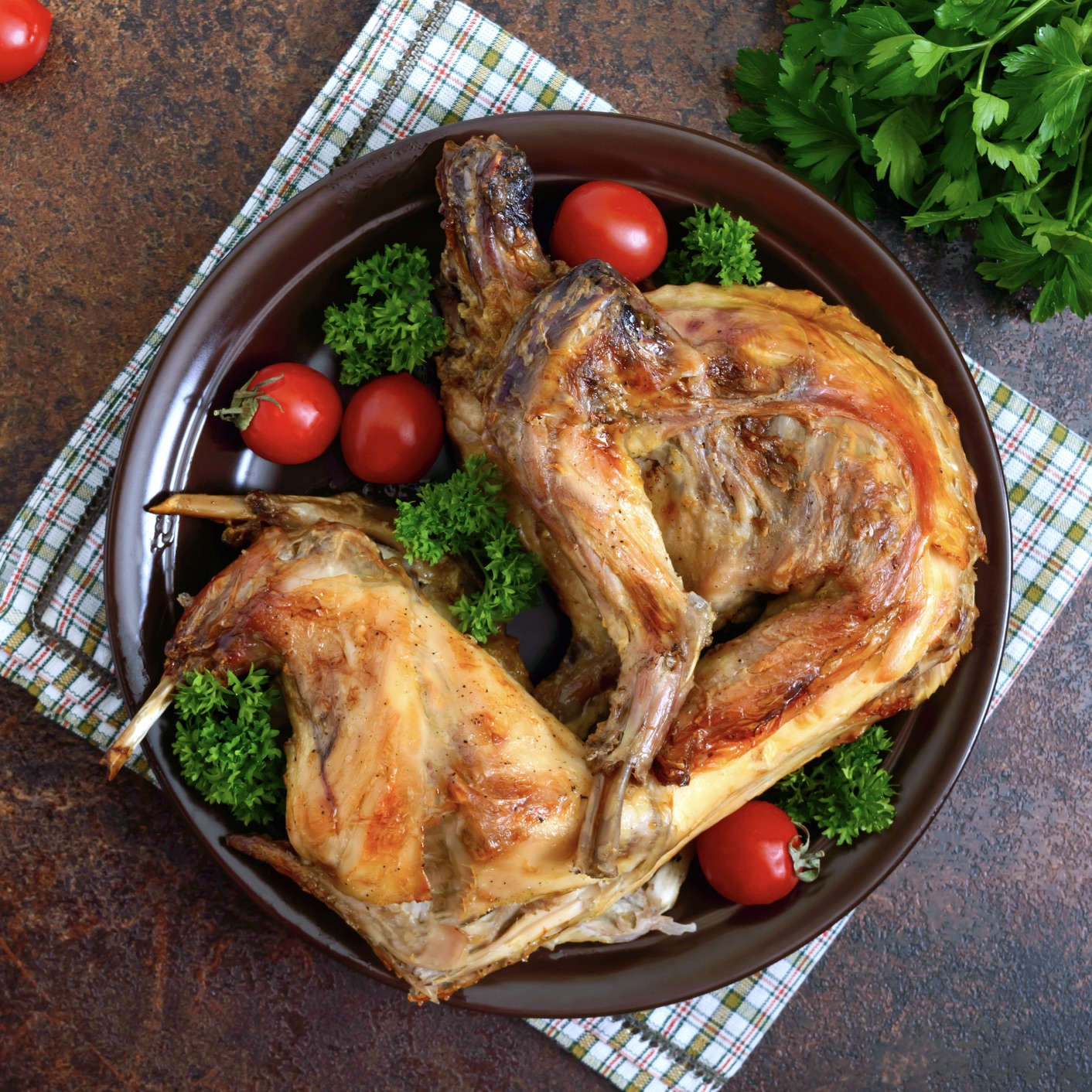
All other mammalian meat
Learn about other mammals that people eat, such as goats, rabbits, squirrels, and kangaroos here.
Other meat products
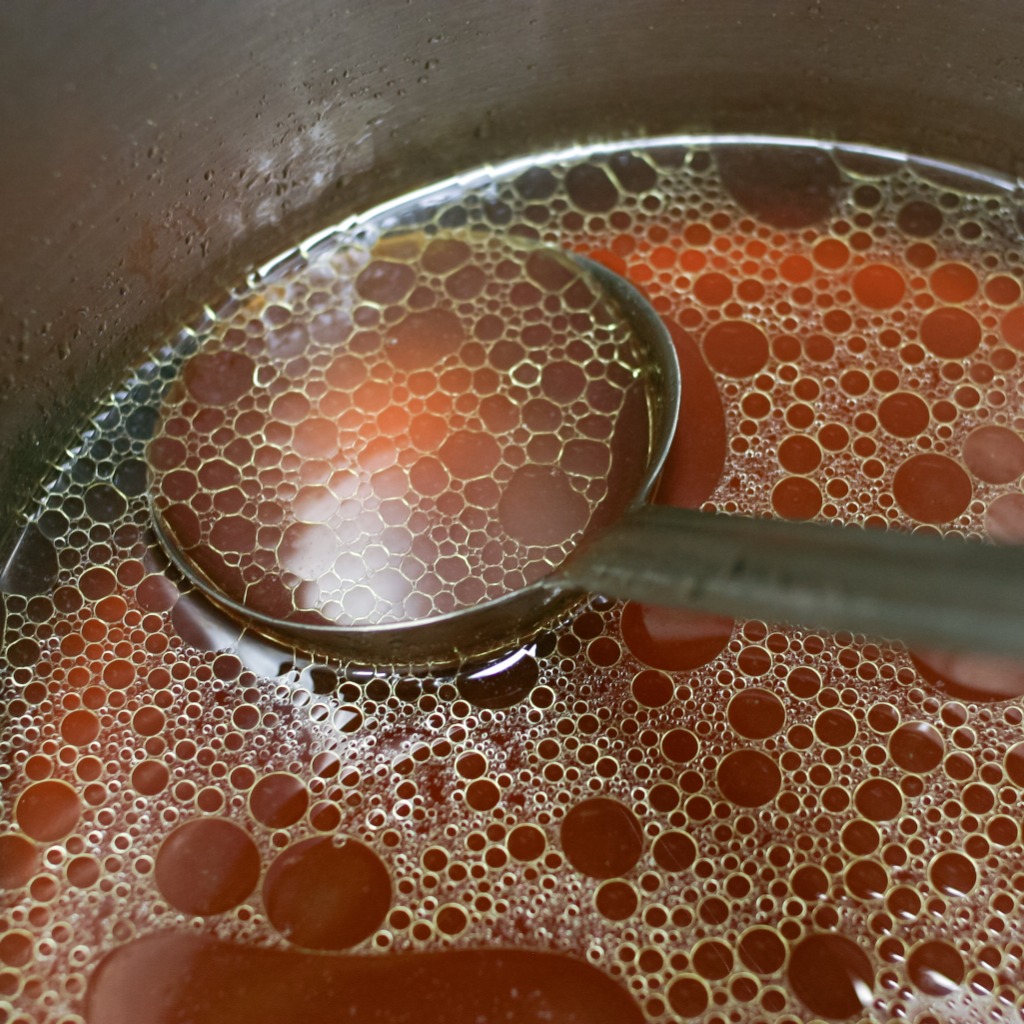
Beef Broth
Mammalian broths are added as a flavoring to many foods.
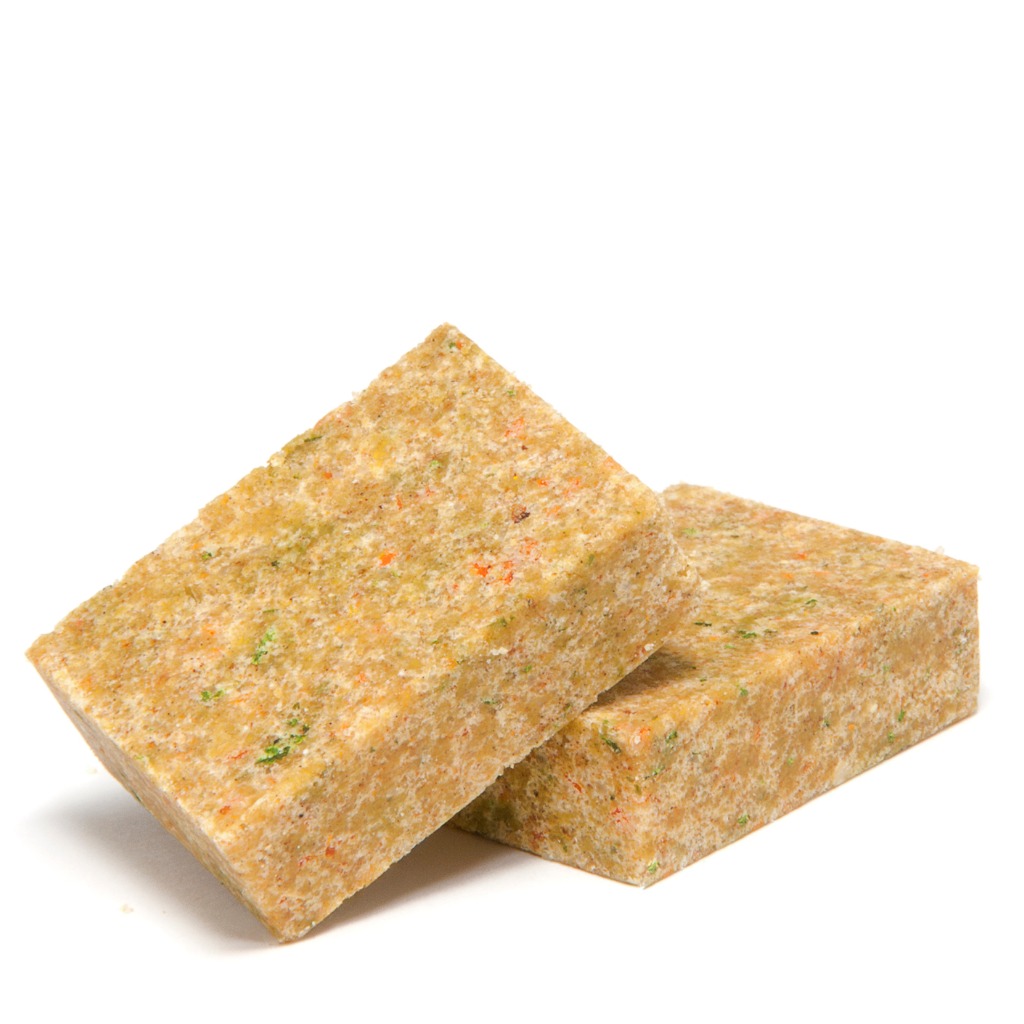
Bouillon
Mammalian bouillon is also used to flavor many dishes.

Soups
Soups are often made from mammalian meat and bones.

Collagen powder
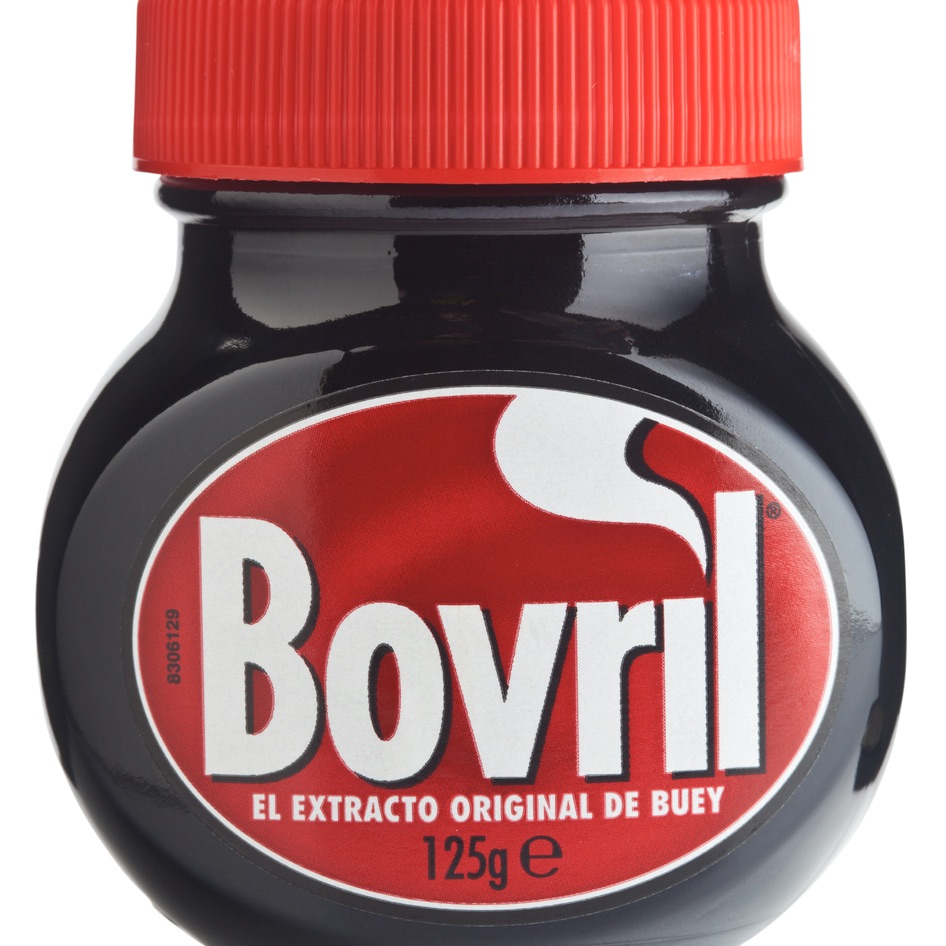
Meat extracts
Some unexpected sources of lard

Gravy and sauces
Gravy and sauces are often made with lard, as are biscuits.

Refried beans
Refried beans are often made with pork lard, as are many other Mexican dishes.

Tortillas
Tortillas are often made with pork lard, and tortilla chips are often fried in it.

Pies and other pastries
Pies and pastries often have lard added to their doughs.

Corn muffin mixes
Corn muffin mixes, like Jiffy, can contain lard.

Vegetables
Vegetables may be flavored with lard, especially in the southern U.S.
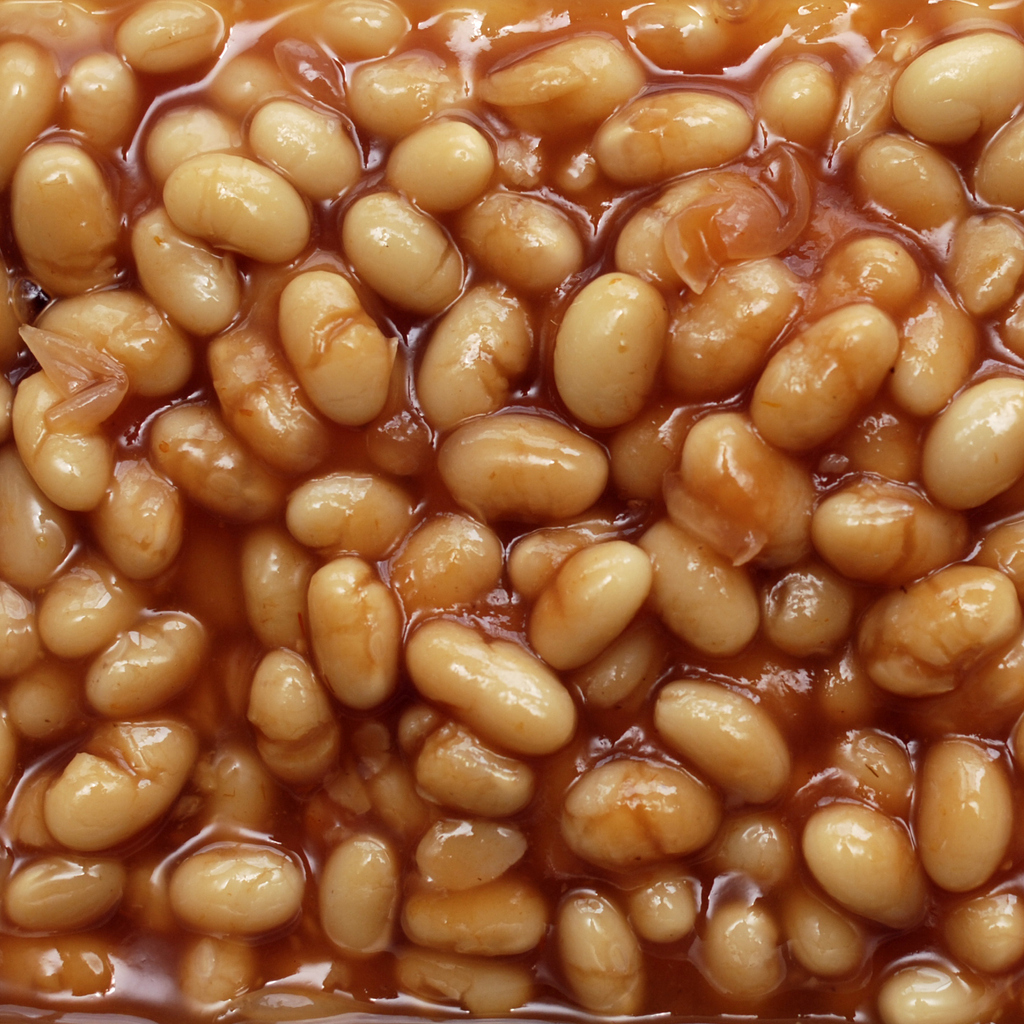
Baked beans
Baked beans are often made with lard or pork belly.

Fried chicken, fish, etc.
Beef tallow or lard may be added to fry oil used to fry chicken and other foods.

French fries
As with chicken, beef tallow can be added to the fry oil used to make French fries.

Mashed potatoes
Mashed potatoes often have lard added to them, especially in the southern U.S.
Tips for Adjusting to a Diet without Red Meat
Explore Substitutes
- Don’t despair! There a great substitutes for almost all the foods you love.
- Steak:
- Many people can’t tell emu from beef.
- Some people think ostrich is even better, although it’s more expensive.
- Amaroo Hills Farm, which is owned by a person with AGS, is a great source for both.
- You can order directly from the Amaroo Hills Farm website or look for a store near you that sells their products.
- Amaroo Hills Farms also sells other cuts of emu that are good substitutes for other cuts of beef.
- Burgers:
- Ground emu with added duck fat makes a great burger, as does ground ostrich.
- Turkey and chicken burgers can be made to taste more like beef. See tips below.
- Sausages:
- Amaroo Hills Farm also sells delicious breakfast, Italian, and other sausage made from duck.
- Turkey hotdogs are hard to tell apart from pork and beef ones.
- There are good chicken and turkey sausages.
- Do not make the mistake of eating poultry sausages with mammalian gut or collagen casings!
- Bacon:
- You may discover you like duck bacon better than pork bacon. D’artagnan Uncured Smoked Duck Bacon is a favorite.
- There are also good brands of turkey and chicken bacon, and they are more readily available and cheaper.
- See our substitution suggestions below.
Read Labels
- Now that you have AGS, you need to become a label detective. On the bright side, once you start checking labels, you will become more aware of what you eat and can adopt a healthier diet.
Learn How to Eat Out Safely
- Create a restaurant card explaining your allergy or print one of the existing ones. There are printable restaurant cards in the Additional Resources section below.
- Learn how to talk to restaurant staff about AGS.
- Beware of lard! It is hidden in many foods.
Watch Your Nutrients
- Make sure your diet contains enough protein, calcium, vitamin D, vitamin B12, and iron, especially if you have to give up dairy and don’t like fish or poultry.
- Keep in mind that most vitamin D3 is produced from mammals, so if you take vitamin D supplements look for vegan products.
- Consider asking your healthcare provider for a referral to a dietician if you can’t figure out what foods you can eat or have concerns about nutrition.
Use Available Resources
- Join the AlphaGal Kitchen Facebook group for more advice and information about food products, recipes, and more.
- Find other AGS-related Facebook groups here.
- See Additional Resources for more ideas.
Try New Foods, Recipes, and Cuisines
Exploring new foods and ethnic cuisines can be fun.
- Try guinea hens, pheasant, or quail in addition to emu and ostrich. They are delicious!
- You can buy alligator from Fossil Farms.
- How many kinds of beans have you tried? Check out all the varieties available from Camellia.
- Buy an Indian Cookbook like Fresh India, which has a lot of vegetarian recipes
- Middle Eastern cuisine also has a lot of great vegetarian dishes. Feasts has great recipes and meal ideas.
- Cook more eggs. The Good Egg cookbook has a lot of ideas and won a James Beard award.
- Sign-up for the New York Times Cooking site and learn how to cook lots of delicious fish, seafood, and bean dishes.
Consider a Plant-Based Diet
- In addition to avoiding alpha-gal, other advantages of this diet include zero cholesterol and high fiber. Plant-based diets are associated with many positive health benefits including decreased risk of heart disease, stroke, high blood pressure, obesity, high cholesterol, type 2 diabetes, and many cancers.
- Forks over Knives is a great source of information about plant-based diets.
- Even if you have no interest in becoming a vegan, the Forks over Knives cookbook has great ideas for substitutions for baking, etc.
- Take the Forks over Knives cooking course and become a plant-based home chef in 90 days.
- Even if you adopt a strictly vegan diet, you may need to avoid carrageenan.
Try These Substitutions

⚠ Beef steak
←Instead of this
Try this→
Many people can’t tell emu from beef. Some people like ostrich steaks even better, although they tend to be pricier. Both can be purchased from Amaroo Hills Farm. Pan-roasted duck breast also makes a meaty maincourse.

✅ Emu steak
Photo courtesy of TJ Bruce
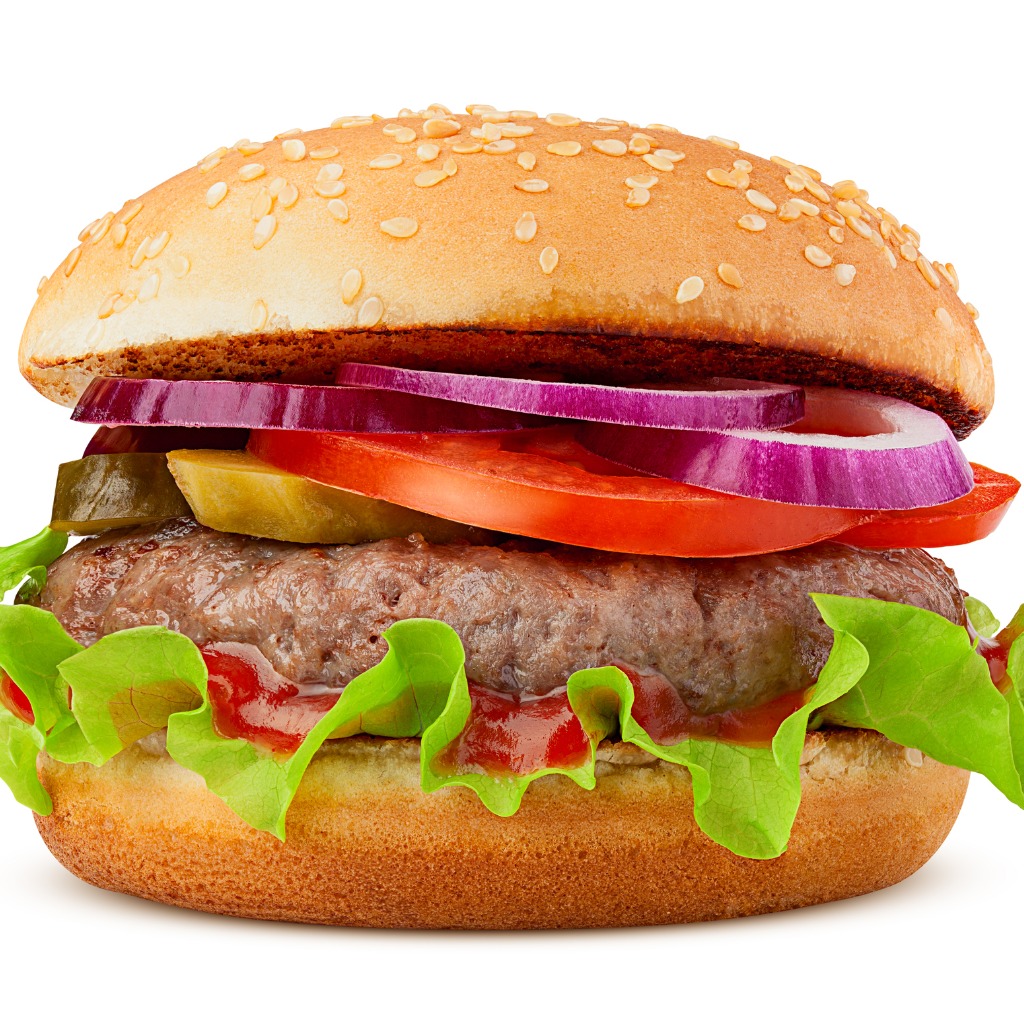
⚠ Hamburger
←Instead of this
Try this→
Ground ostrich or emu with duck fat added both make great burgers. Ground turkey and chicken are other options. Vegan options include the Impossible Burger and the Beyond Burger. If you order any of the above at a restaurant, make sure they are not cooked on a grill used to cook mammalian meats.
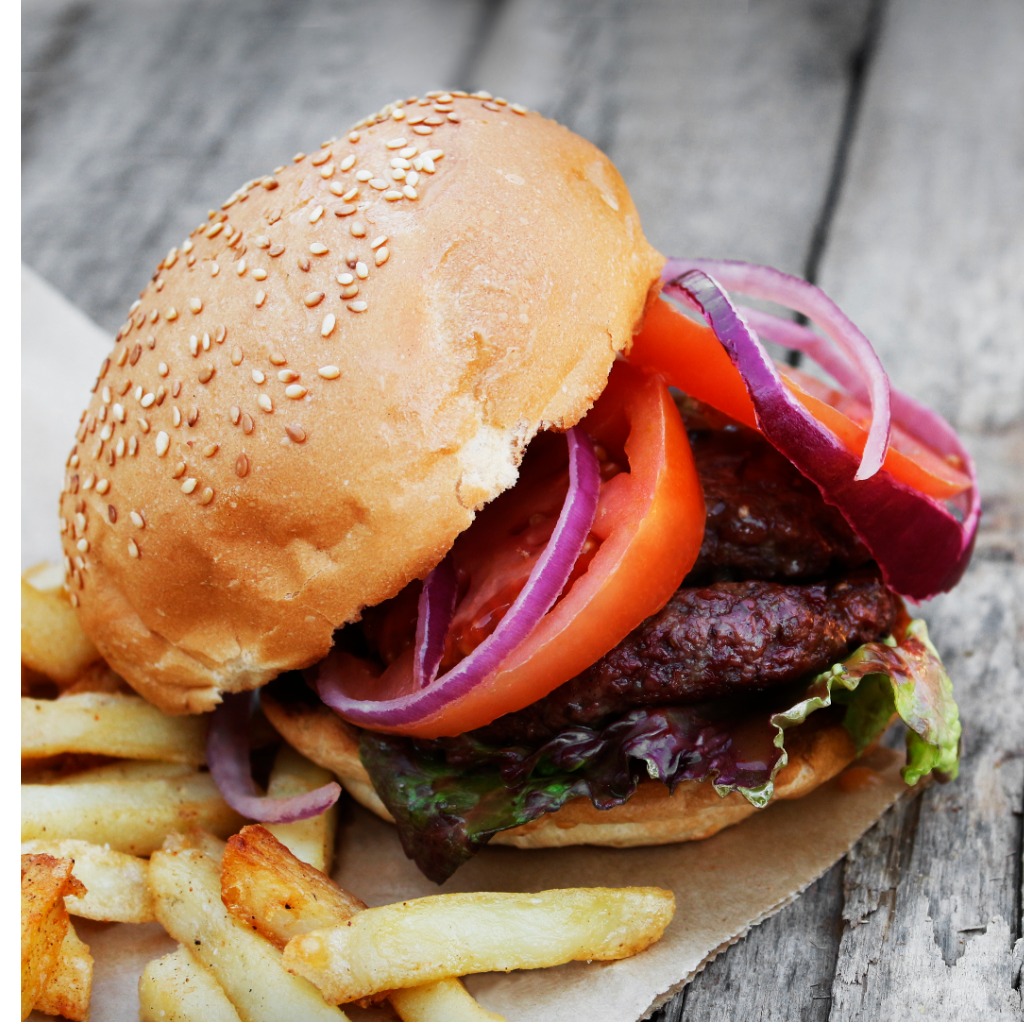
✅ Ostrich burger

⚠ Beef stew with vegetables
←Instead of this
Try this→
There are many cuts of emu. Emu rump roast makes a great stew. Amaroo Hills Farm is a great source of emu.
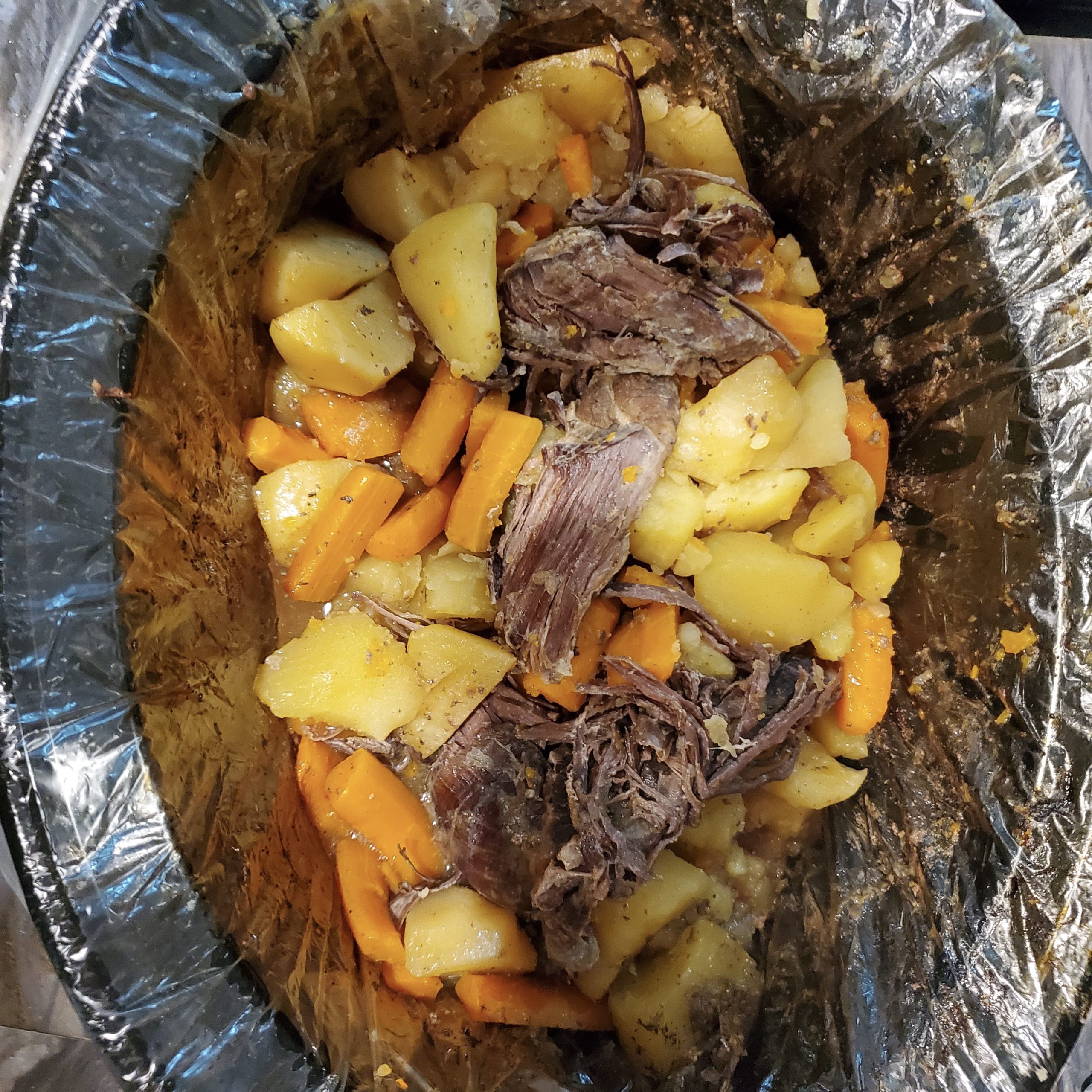
✅ Emu rump roast with vegetables
Photo courtesy of Heather Hibbs

⚠ Pork bacon
←Instead of this
Try this→
Many people discover they like duck bacon more than pork bacon. The most popular brand of duck bacon is D’artagnan’s. Popular brands of turkey bacon include Wellshire Organic Turkey Bacon and the less expensive Sam’s Choice Uncured Turkey Bacon. Some people prefer chicken bacon, including Wellshire Fully-Cooked Chicken Bacon and Al Fresco Uncured Chicken Bacon.
You can also make your own duck bacon.
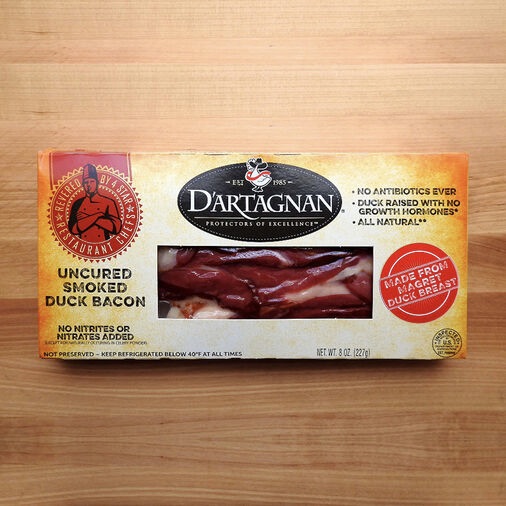
✅ Duck bacon

⚠ Pork breakfast sausage
←Instead of this
Try this→
People rave about Applegate Chicken and Sage Breakfast Sausages. If you try a different poultry sausage, remember to make sure that it doesn’t have a mammalian gut or collagen casing.
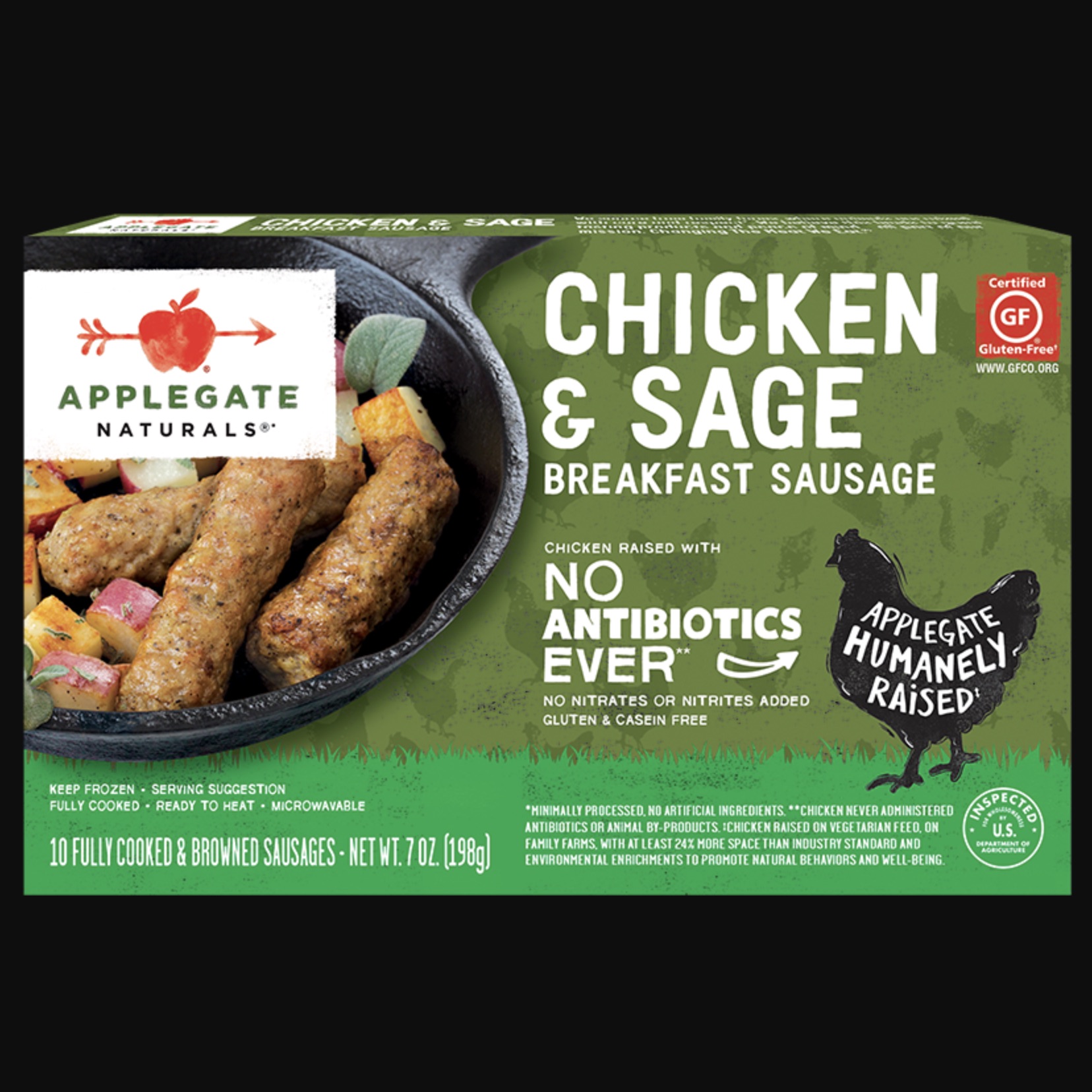
✅ Chicken breakfast sausage

⚠ Pork breakfast sausage patties
←Instead of this
Try this→
The Amaroo Hills Farm duck breakfast sausages are delicious. Amaroo Hills Farm also sells great duck chorizo and Italian sausage.

✅ Duck breakfast sausage patties
Photo courtesty of Tami McGraw

⚠ Pork chop
←Instead of this
Try this→
Revivicor has developed an alpha-gal-free pig, called the GalSafe™ pig. Request some alpha-gal-free, GalSafe™ pork by emailing Revivicor at [email protected].

✅ GalSafe™ Pork Chop
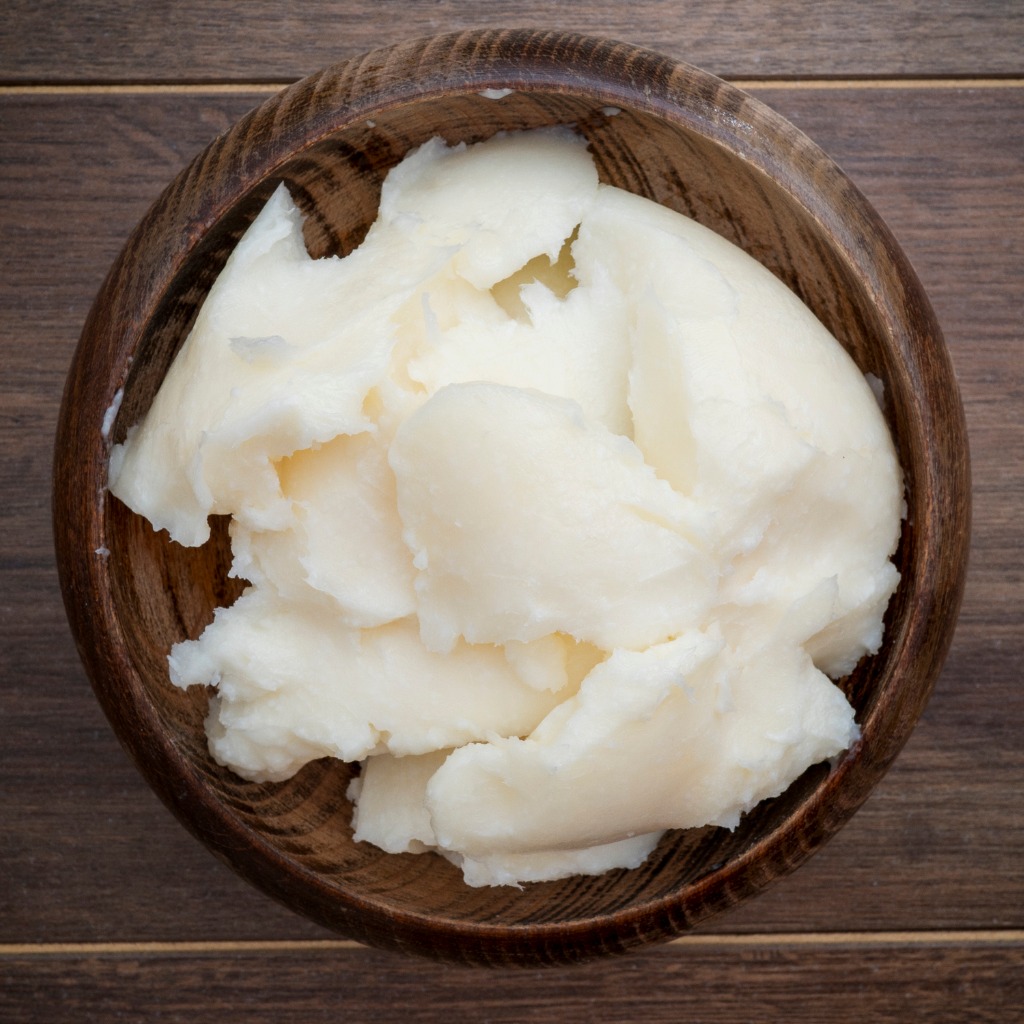
⚠ Pork lard
←Instead of this
Try this→
Duck fat makes a great substitute for lard. Other good substitutes include vegetable shortening and dairy-free butter. Remember to check labels and make sure the brand you buy doesn’t contain mammalian byproducts or carrageenan.
More advice below in Cooking Tips from People with Alpha-gal Syndrome.

✅ Duck fat
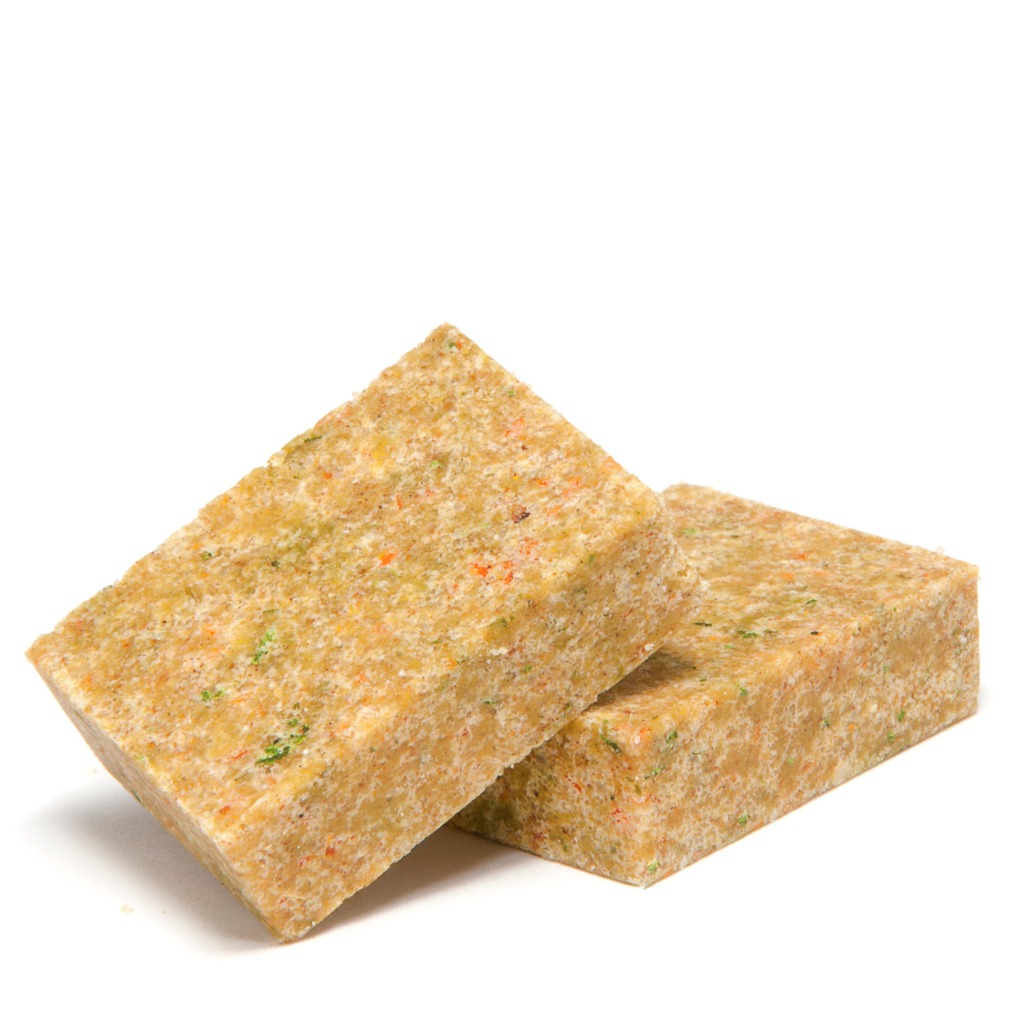
⚠ Beef Bouillon
←Instead of this
Try this→
Better than Bouillon Vegetarian No Beef Base is certified vegan and a great substitute for beef bouillon.

✅ Vegetarian Beef Better Than Bouillon

⚠ Pork Franks
←Instead of this
Try this→
Jennie-O Turkey Franks are a popular alpha-gal-free brand of hotdog. Some people like Applegate Naturals Turkey Hotdogs better because of their simple ingredients.
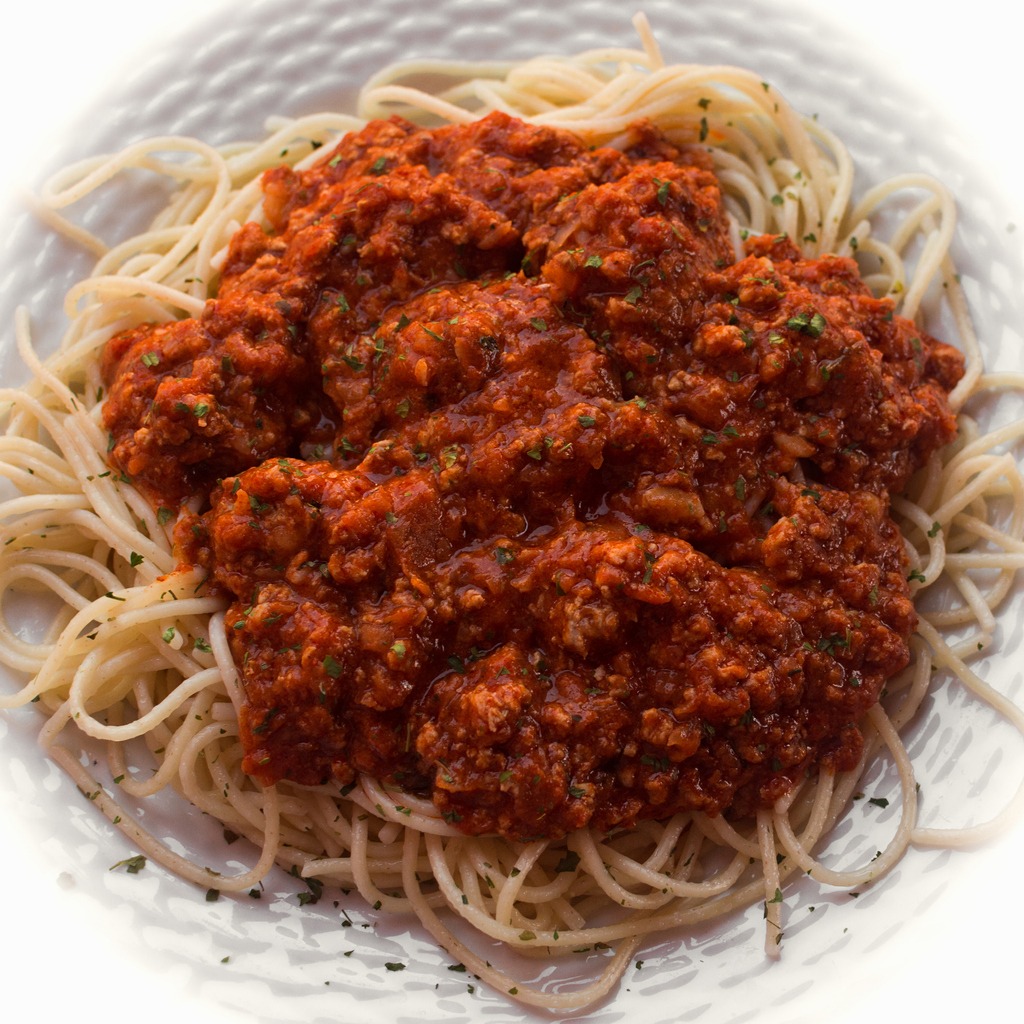
⚠ Spaghetti Bolognese Made with Ground Beef
←Instead of this

✅ Spaghetti Bolognese Made with Eggplant and Italian Duck Sausage
Photo courtesy of Kim Nellis Bivins
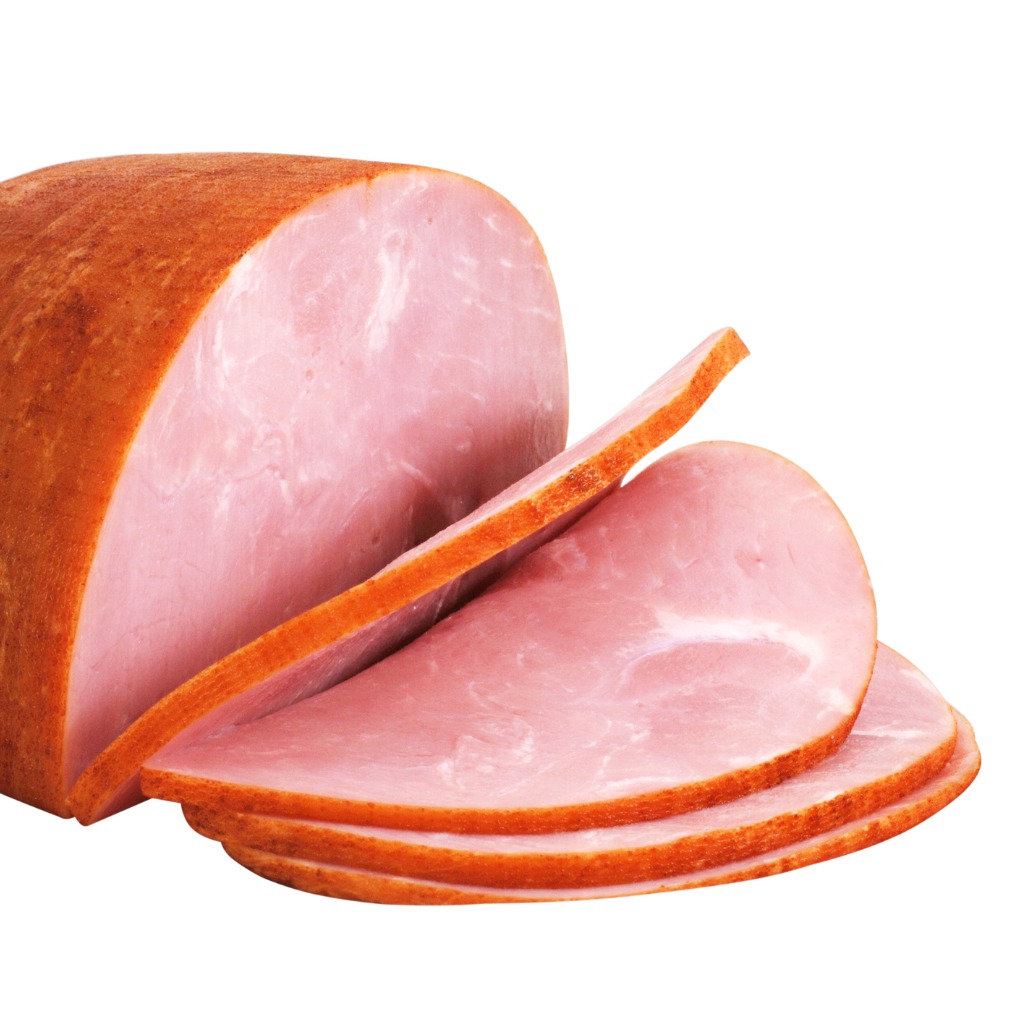
⚠ Pork Ham
←Instead of this
Try this→
Yes, turkey ham. It’s a thing! Wellshire Seasoned Honey Turkey Ham Nugget comes highly recommended. Smoked turkey legs can also be used in place of ham. Watch out for carrageenan in some other brands.
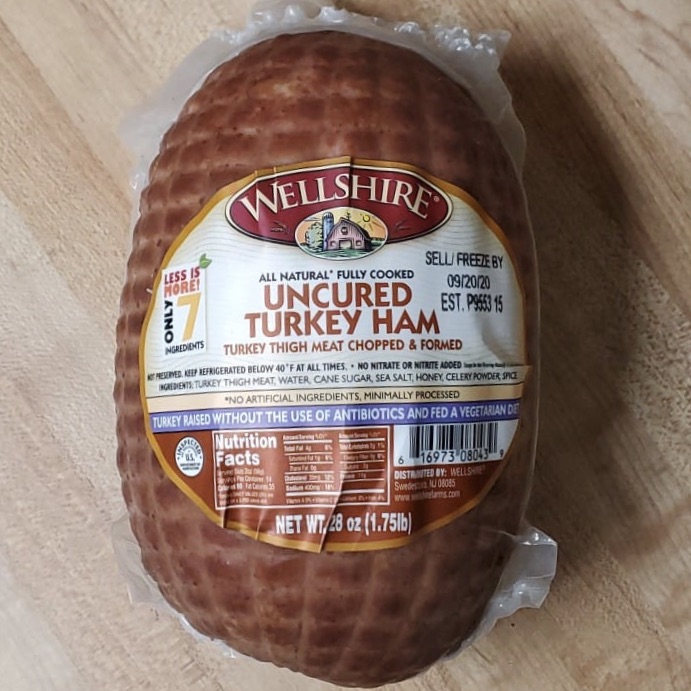
✅ Turkey Ham
Photo courtesy of Jennifer Burton

⚠ Kielbasa
←Instead of this
Try this→
Eckrich Skinless Turkey Smokes Sausage Rope is a favorite in the alpha-gal community.
Make sure you get the skinless one!
Collagen casings are made from cows and contain alpha-gal.
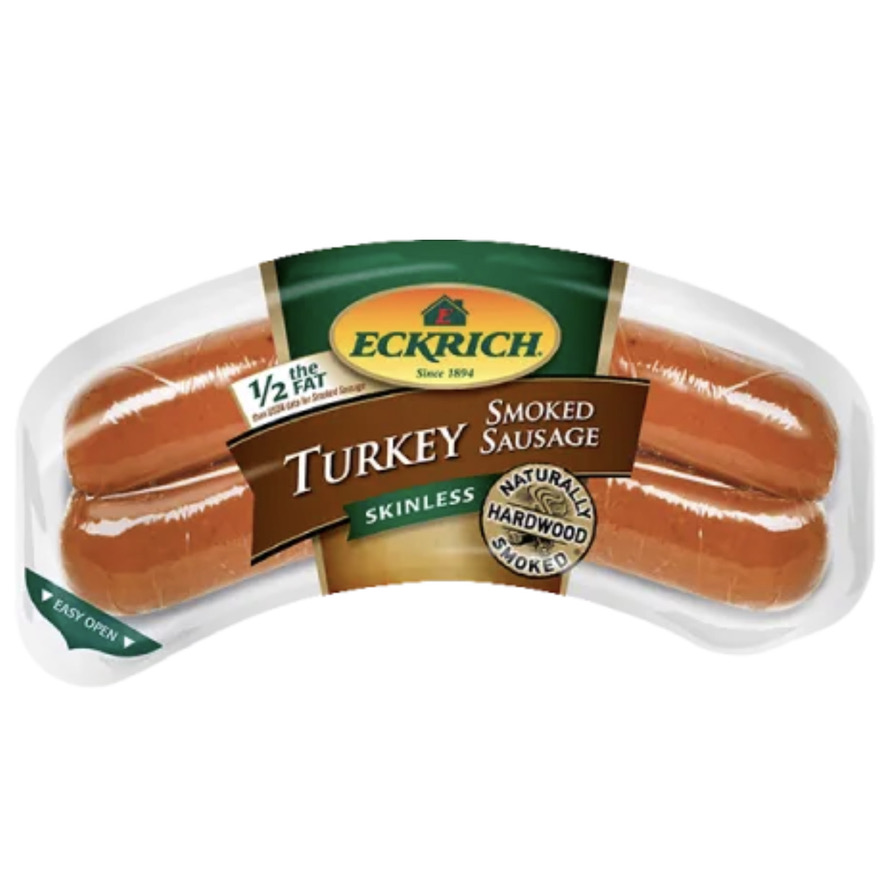
✅ Eckrich Turkey Skinless Smoked Sausage Rope

⚠ Beef Pastrami
←Instead of this
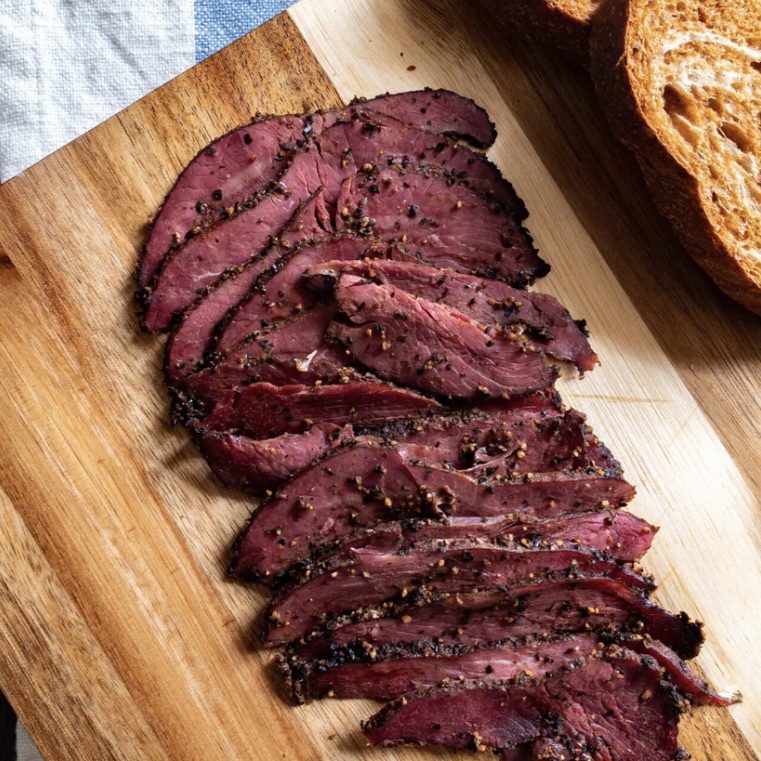
✅ Amaroo Hills Farm Emu Pastrami

⚠ Pork Corn Dog
←Instead of this

✅ Foster Farms Chicken Corn Dogs
Cooking Tips from People with Alpha-gal Syndrome
How to Make a Turkey Burger Taste More Like a Hamburger
Rebecca:
I finely chop up some mushrooms and cook them with the ground turkey and it tastes really good. All of my little kids eat it up too. The mushrooms give the meat moisture and a beefy flavor. I also discovered that the cheaper turkey is more tender since it has dark and white meat. If I use ground turkey made from only white meat, it is pretty tough.
Astrid Smith:
Add mushroom powder and soy sauce… but we just use ground emu
Julie Lyn:
Add Worcestershire sauce, a tablespoon of duck fat, and powdered mushrooms, a teaspoon garlic powder, a teaspoon onion powder. You can’t hardly tell the difference
Crystal J. Norton:
Add Worcestershire sauce and McCormick hamburger seasoning.
Crystal Payne:
Mix half ground chicken and half ground turkey then add a cap of liquid smoke for each lbs. Boom, tastes like burgers!
Annie Katarina:
Dehydrated mushroom powder adds great flavour.
Kim Nellis Bivins:
I like Mushroom & Company Umami from Trader Joe’s.
Liz Palmer:
I find that adding onions and mushrooms sautéed in margarine or plant-based “butter” to my ground turkey gives it a heartier taste. I also sometimes add a few drops of liquid smoke.
Debbie Jones:
Blend up onions, carrots and celery and brown it with the ground meat. Helps with the texture and taste.
April McQuate:
Grinding your own chicken or turkey helps with texture! I buy chicken breasts or boneless chicken thighs usually. Cut them down into strips that will fit into your grinder. Package in freezer quart bags FLAT. They thaw better that way.
Butter Substitutes
Becky Godwin Ball:
I use plant butter, mainly Miyoko’s Organic Cultured Vegan Butter, for frostings and things of that nature. For cookies that call for butter I use butter flavored vegetable shortening. I also use a product called Nutiva Organic Coconut Oil Butter Flavor to cook my eggs in every morning and to spread on my toast.
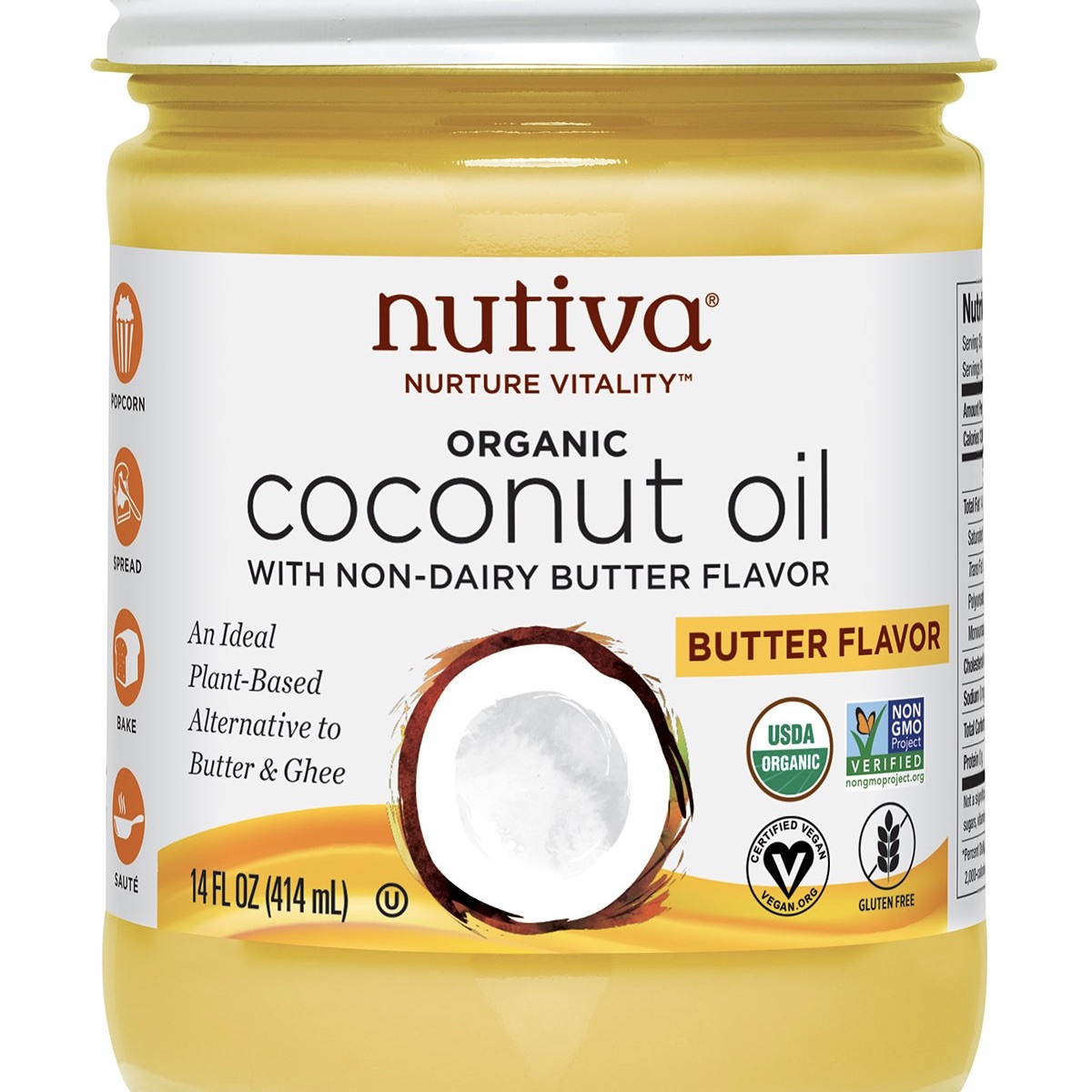
Nutiva Organic Coconut Oil Butter Flavor

Miyoko's Organic Cultured Vegan Butter
Substitute Duck Fat for Pork Lard
Montie Webb Vogt:
Duck fat is the best substitute for pork lard. I render my own from duck skins/fat available at Amaroo Hills website. It can also be purchased from D’Artagnan already rendered.
Jennifer Burton:
Best sub for pork lard – duck fat
How to Cook an Emu Steak
From Amaroo Hills Farm:
COOKING TIPS
The USDA recommends emu and ostrich be treated like beef in terms of internal cooking temperatures. Emu and ostrich are both true red meats and are categorized as such by the USDA. Since emu and ostrich both have little fat, overcooking the meats may cause them to become dry and a bit tough. You do not need specific emu or ostrich recipes to cook them. Emu and ostrich are not gamey and do not require any special preparation. You can simply substitute emu and ostrich in place of beef, but just keep in mind that these meats cook quicker than beef.
GRILLED STEAKS/FILETS
Chefs in culinary schools learn that grilled emu and ostrich steaks are best cooked no more than medium rare for optimal taste. For optimal flavor and consistency, grill (or pan fry) steaks to an internal temperature of 125-130F degrees. Then wrap in foil and let the steak rest for 5 to 10 mins to allow it to continue to cook and marinate in its own juices. You can also cook the steaks to medium (130-140 degrees) if you prefer a more cooked steak. For seasoning you can go simple (olive oil, salt, pepper), use a dry rub, or use a marinade—whatever you prefer.
Bacon Ideas
Stephanie Smith:
I cook turkey bacon on a sheet pan with olive oil, garlic and onion powder to get a nice crisp and savory flavor.
Using a sprinkle of brown sugar/pumpkin pie spice or drizzle maple syrup would work too for those who like sweet bacon.
Julie Lyn:
I fry turkey bacon in duck fat. It’s so delicious!
Use Smoked Turkey Instead of Ham
PJ Scott:
To season dishes such as beans use smoked turkey legs or wings. Also you can put legs in slow cooker till the meat falls off the bone and make bbq.
Jennifer Burton:
The best turkey ham is Wellshire Farms 1.75 lb Seasoned Honey Turky Ham Nugget. The next best thing to Wellshire Farms is Frick’s Smoked Turkey Drum or wings. They make great ‘ham & beans’ or pulled pork sammies.
Anna Lee Lightsey Jordan:
Use smoked turkey necks to season vegetables. Use smoked turkey wings to make gumbo.

Meatballs
PJ Scott:
Italian duck sausage (available from Amaroo Hills Farm) makes great meatballs or pasta sauce.
Avoidance Beyond Mammalian Meat, Organs, and Tissues
When avoiding the riskiest foods isn’t enough to stop your reactions, you may need to eliminate other sources of alpha-gal from your diet. Use the links below to learn more about these sources.

Cross-contamination→
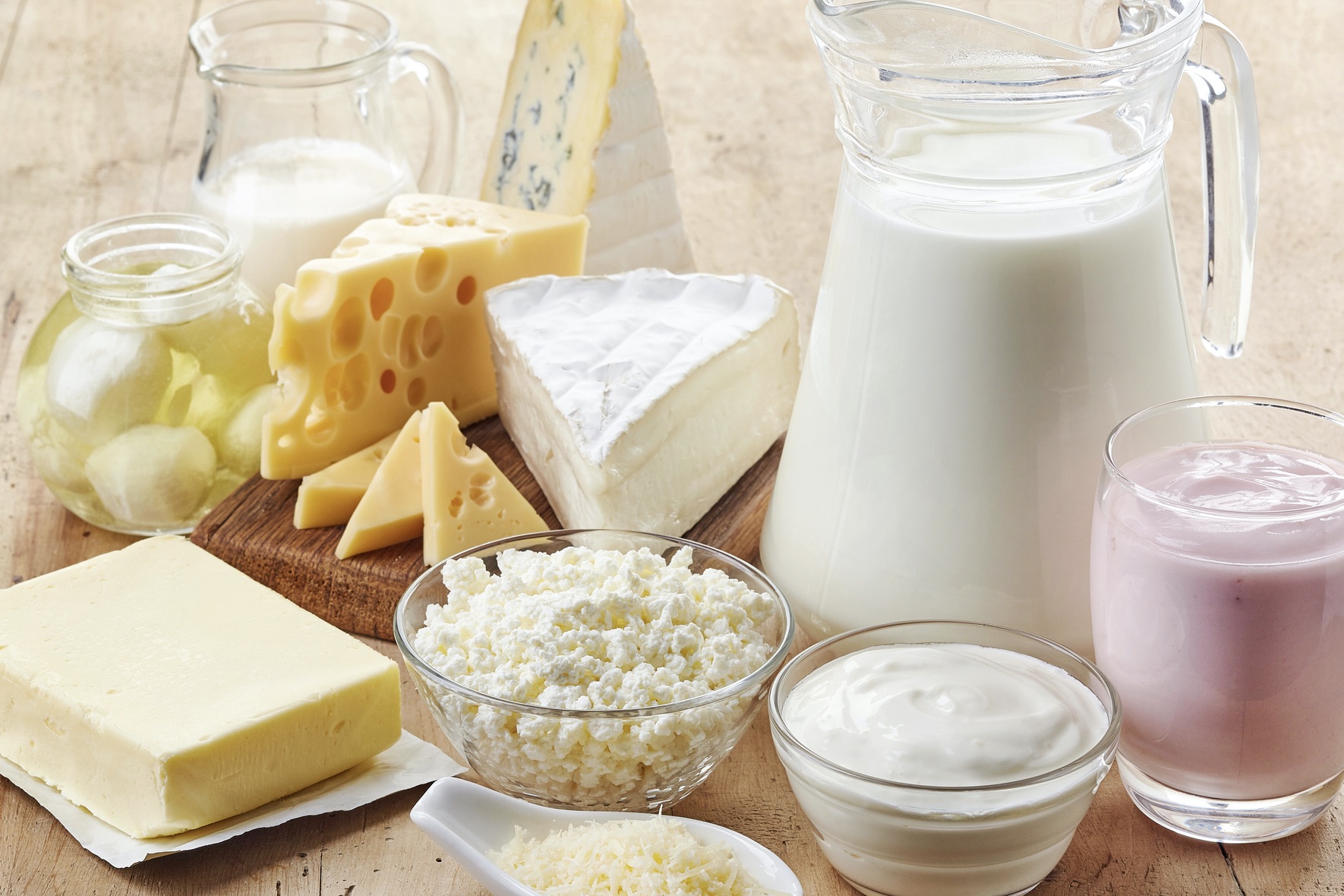
Milk and Other Dairy Products→
(Coming soon)

Gelatin→

Carrageenan→
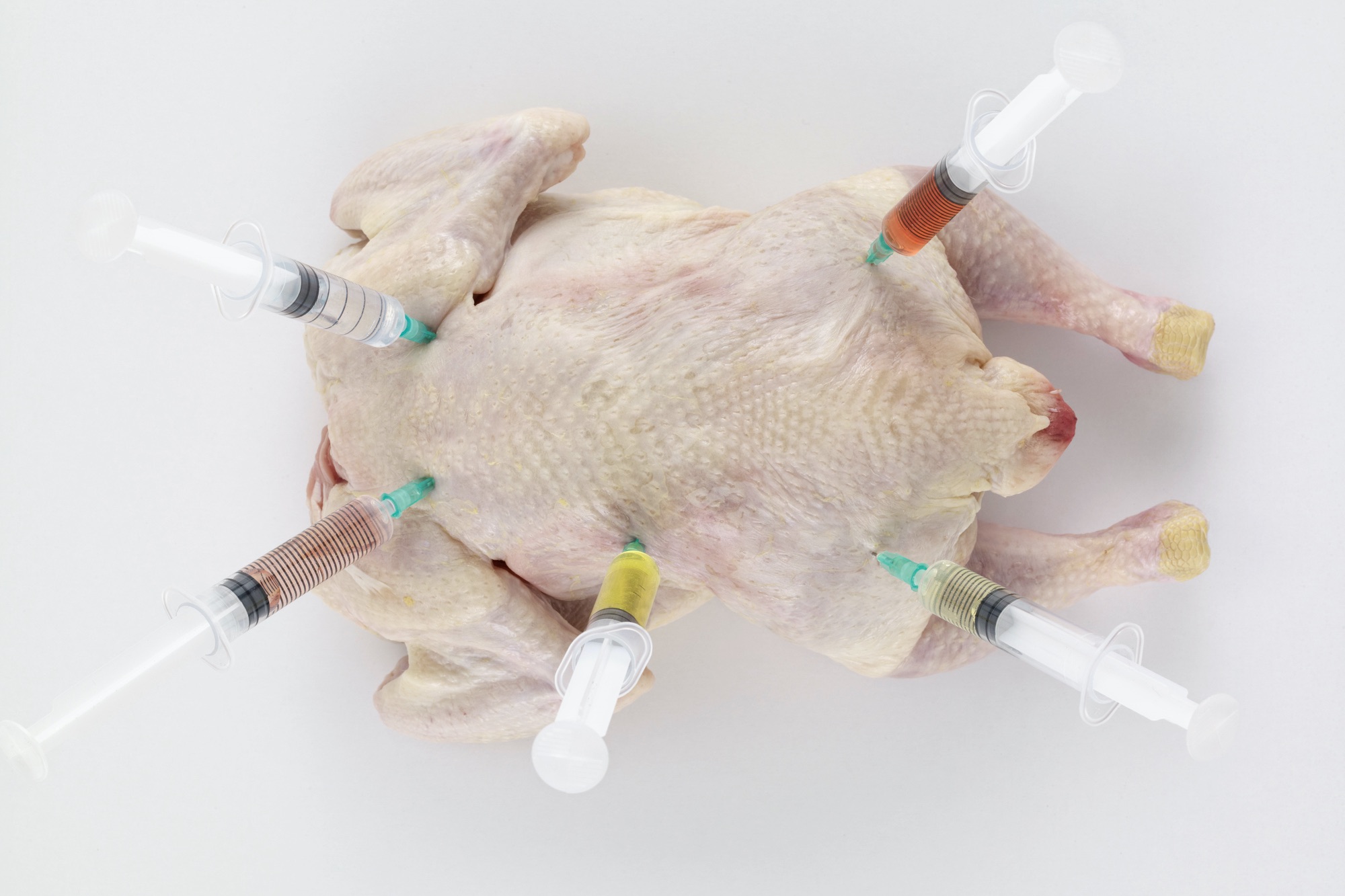
Natural Flavors and Flavorings→
(Coming soon)

Mammalian Byproducts→
Not Just Food
Alpha-gal syndrome is not just a food allergy. People with AGS can also have life-threatening, and sometimes fatal, reactions to medications and other medical products. Some react to airborne alpha-gal, especially fumes from cooking meat. Personal care and household products can also cause reactions. For more information, see What is Alpha-gal Syndrome.
Non-Food-Related Risks By the Numbers
More Information

Medications and Other Medical Products→
(Coming soon)

Personal Care Products→

Reactions to Airborne Alpha-gal→
Additional Resources
The AlphaGal Kitchen
Check out the AlphaGal Kitchen for more tips on how to adjust to an alpha-gal-free diet, including recipes, emu and ostrich suppliers, restaurant tips, alpha-gal related food blogs, product recommendations and more. There is an AlphaGal Kitchen website, Facebook group, and Youtube channel.
Restaurant Cards
Bring a card describing you allergy to restaurants and ask the wait staff to share it with the manager and chef preparing your meal. You can make your own or use one created by someone else.
Coming soon!
Cookbook Suggestions
Warning: some recipes in some of these cookbooks include mammalian ingredients.

Vegan for Everybody

Thug Kitchen
Warning: language may not be appropriate for children.
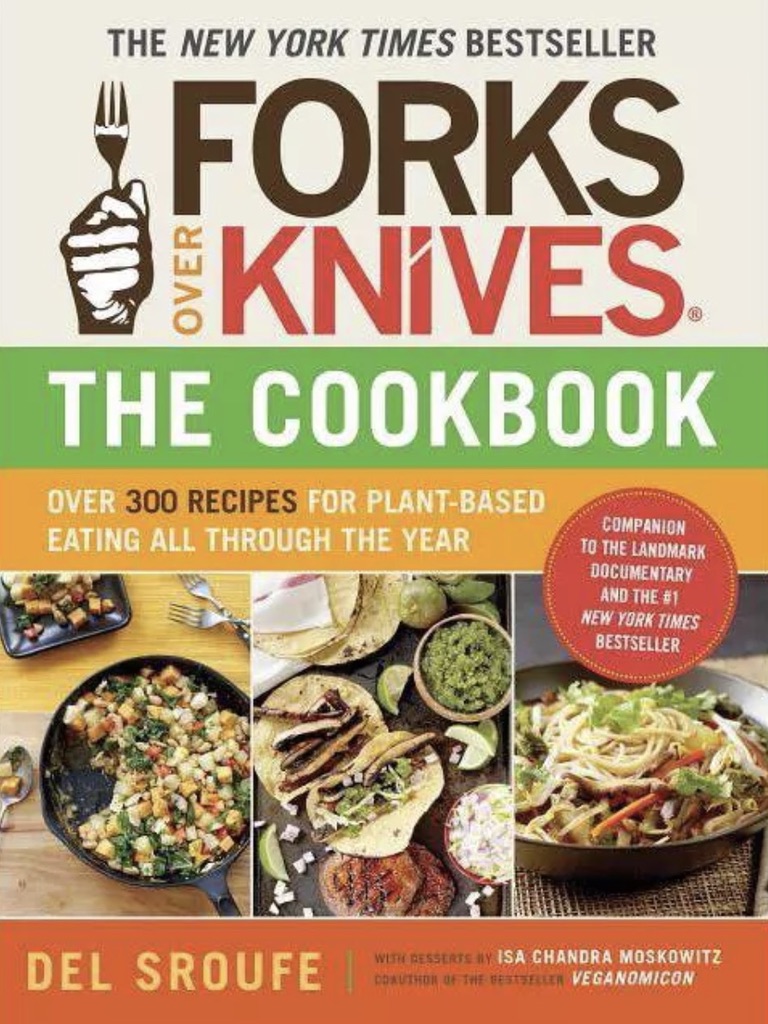
Forks Over Knives

The Good Egg
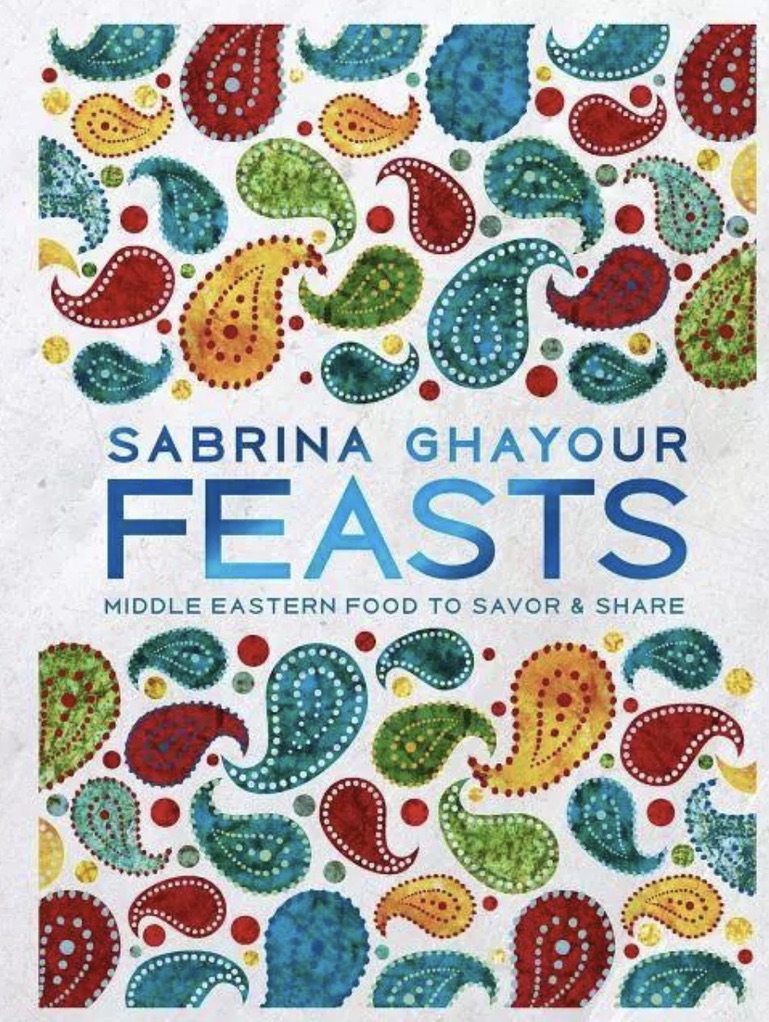
Feasts

Fresh India
Online sources of red meat substitutes

Amaroo Hills Emu Farm
Emu and ostrich steaks, ground emu, breakfast and Italian sausage, emu pastrami and more. Tastes just like the red meat you love!

Fossil Farms
Fossil farms sells ostrich, emu, guinea fowl, pheasants, quail, and squab, etc.
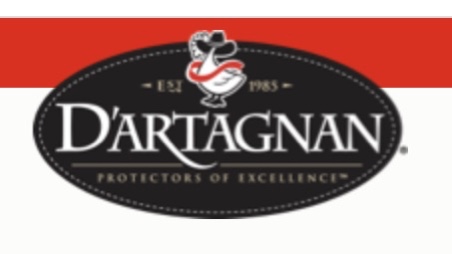
D'Artagnan
Not all D’Artagnan products are not alpha-gal-friendly, but many people with alpha-gal syndrome like D’Artagnan duck bacon. Sometimes it is available in supermarkets, but it can also be ordered online.
Online sources of seafood

Wild Alaska Seafood Company
A monthly seafood membership that delivers sustainably-sourced seafood to your doorstep.

Seafood Finder
Use this tool from Local Catch to find local fishers and seafood harvesters who sell directly to consumers.
Other online food sources

Thrive Market
A popular source of vegan foods and other vegan products.

Camellia
A great source of beans and other legumes.
Recipes and cooking tips

Forks over Knives
Resources for plant-based cooking.

The Conscious Plant Kitchen
“A vegan food blog where you will find many easy vegan recipes to help you live a vegan lifestyle while saving the planet one bite at a time. Here we are sharing easy vegan recipes for any diet including: easy vegan recipes, vegan keto recipes, and vegan paleo recipes (grain-free vegan recipes for those who follow a paleo diet).”
References
1. Commins SP, Satinover SM, Hosen J, Mozena J, Borish L, Lewis BD, Woodfolk JA, Platts-Mills TA. Delayed anaphylaxis, angioedema, or urticaria after consumption of red meat in patients with IgE antibodies specific for galactose-α-1, 3-galactose. Journal of Allergy and Clinical Immunology. 2009 Feb 1;123(2):426-33.
2. Commins S, Lucas S, Hosen J, Satinover SM, Borish L, Platts-Mills TA. Anaphylaxis and IgE antibodies to galactose-alpha-1, 3-galactose (alphaGal): insight from the identification of novel IgE ab to carbohydrates on mammalian proteins. Journal of Allergy and Clinical Immunology. 2008 Feb 1;121(2):S25.
3. Commins SP, James HR, Kelly LA, Pochan SL, Workman LJ, Perzanowski MS, Kocan KM, Fahy JV, Nganga LW, Ronmark E, Cooper PJ. The relevance of tick bites to the production of IgE antibodies to the mammalian oligosaccharide galactose-α-1, 3-galactose. Journal of Allergy and Clinical Immunology. 2011 May 1;127(5):1286-93.
4. Soh JY, Huang CH, Lee BW. Carbohydrates as food allergens. Asia Pacific Allergy. 2015 Jan 1;5(1):17-24.
5. Levin M, Apostolovic D, Biedermann T, Commins SP, Iweala OI, Platts-Mills TA, Savi E, van Hage M, Wilson JM. Galactose α-1, 3-galactose phenotypes: Lessons from various patient populations. Annals of Allergy, Asthma & Immunology. 2019 Jun 1;122(6):598-602.
6. Platts-Mills TA, Li RC, Keshavarz B, Smith AR, Wilson JM. Diagnosis and management of patients with the α-Gal syndrome. The Journal of Allergy and Clinical Immunology: In Practice. 2020 Jan 1;8(1):15-23.
7. Commins SP. Invited commentary: alpha-gal allergy: tip of the iceberg to a pivotal immune response. Current allergy and asthma reports. 2016 Sep 1;16(9):61.
8. Crispell G, Commins SP, Archer-Hartman SA, Choudhary S, Dharmarajan G, Azadi P, Karim S. Discovery of alpha-gal-containing antigens in North American tick species believed to induce red meat allergy. Frontiers in immunology. 2019 May 17;10:1056.
9. Monzón JD, Atkinson EG, Henn BM, Benach JL. Population and evolutionary genomics of Amblyomma americanum, an expanding arthropod disease vector. Genome biology and evolution. 2016 May 1;8(5):1351-60.
10. Raghavan RK, Peterson AT, Cobos ME, Ganta R, Foley D. Current and future distribution of the lone star tick, Amblyomma americanum (L.)(Acari: Ixodidae) in North America. PLoS One. 2019 Jan 2;14(1):e0209082.
11. Wilson JM, Platts-Mills TA. Red meat allergy in children and adults. Current opinion in allergy and clinical immunology. 2019 Jun 1;19(3):229-35.
12. Commins, SP. (2018). Retrieved from: More people developing red meat allergy from tick bites. CBS News
13. Flaherty MG, Threats M, Kaplan SJ. Patients’ Health Information Practices and Perceptions of Provider Knowledge in the Case of the Newly Discovered Alpha-gal Food Allergy. Journal of Patient Experience. 2020 Feb;7(1):132-9.
14. Flaherty MG, Kaplan SJ, Jerath MR. Diagnosis of life-threatening alpha-gal food allergy appears to be patient driven. Journal of primary care & community health. 2017 Oct;8(4):345-8.
15. Cabezas-Cruz A, Hodžić A, Román-Carrasco P, Mateos-Hernández L, Duscher GG, Sinha DK, Hemmer W, Swoboda I, Estrada-Peña A, De La Fuente J. Environmental and molecular drivers of the α-Gal syndrome. Frontiers in Immunology. 2019 May 31;10:1210.
16. Commins SP, Platts-Mills TA. Tick bites and red meat allergy. Current opinion in allergy and clinical immunology. 2013 Aug;13(4):354.
17. Stoltz LP, Cristiano LM, Dowling AP, Wilson JM, Platts-Mills TA, Traister RS. Could chiggers be contributing to the prevalence of galactose-alpha-1, 3-galactose sensitization and mammalian meat allergy?. The journal of allergy and clinical immunology. In practice. 2019 Feb;7(2):664.
18. Arkestål K, Sibanda E, Thors C, Troye-Blomberg M, Mduluza T, Valenta R, Grönlund H, van Hage M. Impaired allergy diagnostics among parasite-infected patients caused by IgE antibodies to the carbohydrate epitope galactose-α1, 3-galactose. Journal of Allergy and Clinical Immunology. 2011 Apr 1;127(4):1024-8.
19. Chinuki Y, Ishiwata K, Yamaji K, Takahashi H, Morita E. Haemaphysalis longicornis tick bites are a possible cause of red meat allergy in Japan. Allergy. 2016 Mar;71(3):421-5.
20. Hashizume H, Fujiyama T, Umayahara T, Kageyama R, Walls AF, Satoh T. Repeated Amblyomma testudinarium tick bites are associated with increased galactose-α-1, 3-galactose carbohydrate IgE antibody levels: a retrospective cohort study in a single institution. Journal of the American Academy of Dermatology. 2018 Jun 1;78(6):1135-41.
21. Bianchi, John (2019). Personal communication
22. Morisset M, Richard C, Astier C, Jacquenet S, Croizier A, Beaudouin E, Cordebar V, Morel‐Codreanu F, Petit N, Moneret‐Vautrin DA, Kanny G. Anaphylaxis to pork kidney is related to I g E antibodies specific for galactose‐alpha‐1, 3‐galactose. Allergy. 2012 May;67(5):699-704.
23. Fischer J, Hebsaker J, Caponetto P, Platts-Mills TA, Biedermann T. Galactose-alpha-1, 3-galactose sensitization is a prerequisite for pork-kidney allergy and cofactor-related mammalian meat anaphylaxis. Journal of allergy and clinical immunology. 2014 Sep 1;134(3):755-9.
24. Fischer J, Yazdi AS, Biedermann T. Clinical spectrum of α-Gal syndrome: from immediate-type to delayed immediate-type reactions to mammalian innards and meat. Allergo journal international. 2016 Mar 1;25(2):55-62.
25. McPherson TB, Liang H, Record RD, Badylak SF. Galα (1, 3) Gal epitope in porcine small intestinal submucosa. Tissue engineering. 2000 Jun 1;6(3):233-9.
26. Fujiwara M, Araki T. Immediate anaphylaxis due to beef intestine following tick bites. Allergology International. 2019;68(1):127-9.
27. Caponetto P, Fischer J, Biedermann T. Gelatin-containing sweets can elicit anaphylaxis in a patient with sensitization to galactose-α-1, 3-galactose. The Journal of Allergy and Clinical Immunology: In Practice. 2013 May 1;1(3):302-3.
28. Mullins RJ, James H, Platts-Mills TA, Commins S. Relationship between red meat allergy and sensitization to gelatin and galactose-α-1, 3-galactose. Journal of Allergy and Clinical Immunology. 2012 May 1;129(5):1334-42.
29. Kaman K, Robertson D. ALPHA-GAL ALLERGY; MORE THAN MEAT?. Annals of Allergy, Asthma & Immunology. 2018 Nov 1;121(5):S115.
30. Chung CH, Mirakhur B, Chan E, Le QT, Berlin J, Morse M, Murphy BA, Satinover SM, Hosen J, Mauro D, Slebos RJ. Cetuximab-induced anaphylaxis and IgE specific for galactose-α-1, 3-galactose. New England journal of medicine. 2008 Mar 13;358(11):1109-17.
31. Berg EA, Platts-Mills TA, Commins SP. Drug allergens and food—the cetuximab and galactose-α-1, 3-galactose story. Annals of Allergy, Asthma & Immunology. 2014 Feb 1;112(2):97-101.
32. Dunkman WJ, Rycek W, Manning MW. What does a red meat allergy have to do with anesthesia? Perioperative management of alpha-gal syndrome. Anesthesia & Analgesia. 2019 Nov 1;129(5):1242-8.
33. Pfützner W, Brockow K. Perioperative drug reactions–practical recommendations for allergy testing and patient management. Allergo journal international. 2018 Jun 1;27(4):126-9.
34. Dewachter P, Kopac P, Laguna JJ, Mertes PM, Sabato V, Volcheck GW, Cooke PJ. Anaesthetic management of patients with pre-existing allergic conditions: a narrative review. British journal of anaesthesia. 2019 Jul 1;123(1):e65-81.
35. Popescu FD, Cristea OM, IONICĂ FE, Vieru M. DRUG ALLERGIES DUE TO IgE SENSITIZATION TO α-GAL. magnesium. 2018;2017:47-8.
36. Swiontek K, Morisset M, Codreanu-Morel F, Fischer J, Mehlich J, Darsow U, Petitpain N, Biedermann T, Ollert M, Eberlein B, Hilger C. Drugs of porcine origin—A risk for patients with α-gal syndrome?. The Journal of Allergy and Clinical Immunology: In Practice. 2019 May 1;7(5):1687-90.
37. Vidal C, Mendez-Brea P, Lopez-Freire S, Gonzalez-Vidal T. Vaginal Capsules: An Unsuspected Probable Source of Exposure to α-Gal. Journal of investigational allergology & clinical immunology. 2016;26(6):388.
38. Muglia C, Kar I, Gong M, Hermes-DeSantis ER, Monteleone C. Anaphylaxis to medications containing meat byproducts in an alpha-gal sensitized individual. The journal of allergy and clinical immunology. In practice. 2015;3(5):796.
39. Akella K, Patel H, Wai J, Roppelt H, Capone D. Alpha Gal-Induced Anaphylaxis to Herpes Zoster Vaccination. Chest. 2017 Oct 1;152(4):A6.
40. Bakhtiar MF, Leong KW, Kwok FY, Hui MT, Tang MM, Joseph CT, Bathumana‐Appan PP, Nagum AR, ZHM Y, Murad S. P66: ALLERGIC REACTION TO BOVINE GELATIN COLLOID: THE ROLE OF IMMUNOGLOBULIN E TOWARDS GALACTOSE‐ALPHA‐1, 3‐GALACTOSE: IMPLICATIONS BEYOND RED MEAT ALLERGIES. Internal Medicine Journal. 2017 Sep;47:24-.
41. Bradfisch F, Pietsch M, Forchhammer S, Strobl S, Stege HM, Pietsch R, Carstens S, Schäkel K, Yazdi A, Saloga J. Case series of anaphylactic reactions after rabies vaccinations with gelatin sensitization. Allergo Journal International. 2019 Jun 1;28(4):103-6.
42. Stone CA, Commins SP, Choudhary S, Vethody C, Heavrin JL, Wingerter J, Hemler JA, Babe K, Phillips EJ, Norton AE. Anaphylaxis after vaccination in a pediatric patient: further implicating alpha-gal allergy. The Journal of Allergy and Clinical Immunology: In Practice. 2019 Jan 1;7(1):322-4.
43. Stone CA, Hemler JA, Commins SP, Schuyler AJ, Phillips EJ, Peebles RS, Fahrenholz JM. Anaphylaxis after zoster vaccine: Implicating alpha-gal allergy as a possible mechanism. Journal of Allergy and Clinical Immunology. 2017 May 1;139(5):1710-3.
44. Pattanaik D, Lieberman P, Lieberman J, Pongdee T, Keene AT. The changing face of anaphylaxis in adults and adolescents. Annals of Allergy, Asthma & Immunology. 2018 Nov 1;121(5):594-7.
45. Ankersmit HJ, Copic D, Simader E. When meat allergy meets cardiac surgery: A driver for humanized bioprosthesis. The Journal of thoracic and cardiovascular surgery. 2017 Oct 1;154(4):1326-7.
46. Hawkins RB, Frischtak HL, Kron IL, Ghanta RK. Premature bioprosthetic aortic valve degeneration associated with allergy to galactose‐alpha‐1, 3‐galactose. Journal of cardiac surgery. 2016 Jul;31(7):446-8.
47. Kleiman AM, Littlewood KE, Groves DS. Delayed anaphylaxis to mammalian meat following tick exposure and its impact on anesthetic management for cardiac surgery: a case report. A&A Practice. 2017 Apr 1;8(7):175-7.
48. Mozzicato SM, Tripathi A, Posthumus JB, Platts-Mills TA, Commins SP. Porcine or bovine valve replacement in three patients with IgE antibodies to the mammalian oligosaccharide galactose-alpha-1, 3-galactose. The journal of allergy and clinical immunology. In practice. 2014 Sep;2(5):637.
49. Mangold A, Szerafin T, Hoetzenecker K, Hacker S, Lichtenauer M, Niederpold T, Nickl S, Dworschak M, Blumer R, Auer J, Ankersmit HJ. Alpha-Gal specific IgG immune response after implantation of bioprostheses. The Thoracic and cardiovascular surgeon. 2009 Jun;57(04):191-5.
50. Fischer J, Eberlein B, Hilger C, Eyer F, Eyerich S, Ollert M, Biedermann T. Alpha‐gal is a possible target of IgE‐mediated reactivity to antivenom. Allergy. 2017 May;72(5):764-71.
51. Rizer J, Brill K, Charlton N, King J. Acute hypersensitivity reaction to Crotalidae polyvalent immune Fab (CroFab) as initial presentation of galactose-α-1, 3-galactose (α-gal) allergy. Clinical Toxicology. 2017 Aug 9;55(7):668-9.
52. Farooque S, Kenny M, Marshall SD. Anaphylaxis to intravenous gelatin‐based solutions: a case series examining clinical features and severity. Anaesthesia. 2019 Feb;74(2):174-9.
53. Lied GA, Lund KB, Storaas T. Intraoperative anaphylaxis to gelatin-based hemostatic agents: a case report. Journal of asthma and allergy. 2019;12:163.
54. Tobacman JK. The common food additive carrageenan and the alpha-gal epitope. Journal of Allergy and Clinical Immunology. 2015 Dec 1;136(6):1708-9.
55. Tarlo SM, Dolovich J, Listgarten C. Anaphylaxis to carrageenan: A pseudo–latex allergy. Journal of allergy and clinical immunology. 1995 May 1;95(5):933-6.
56. Steinke JW, Platts-Mills TAE, Schuyler A, Commins SP. Reply to “The common food additive carrageenan and the alpha-gal epitope”. Journal of Allergy and Clinical Immunology. 2015 Oct 28;136(6):1709-10
57. Commins SP. Diagnosis & management of alpha-gal syndrome: lessons from 2,500 patients. Expert Review of Clinical Immunology. 2020 Jul 9:1-1.
58. Galili, U., & Avila, J. L. (Eds.). (2012). α–Gal and Anti–Gal: α1, 3–Galactosyltransferase, α–Gal Epitopes, and the Natural Anti–Gal Antibody Subcellular Biochemistry (Vol. 32). Springer Science & Business Media.
59. Fischer J, Lupberger E, Hebsaker J, Blumenstock G, Aichinger E, Yazdi AS, Reick D, Oehme R, Biedermann T. Prevalence of type I sensitization to alpha‐gal in forest service employees and hunters. Allergy. 2017 Oct;72(10):1540-7.
60. SAT0456 SERO-REACTIVITY TO GALACTOSE-ALPHA-1,3-GALACTOSE AND CLINICAL PRESENTATIONS OF PATIENTS SEEN IN A RHEUMATOLOGY OUTPATIENT PRACTICE. Annals of the Rheumatic Diseases 2019 Jun 15;78:1317-8.
61. Bianchi J, Walters A, Fitch ZW, Turek JW. Alpha-gal syndrome: Implications for cardiovascular disease. Global Cardiology Science and Practice. 2020 Feb 9;2019(3).
62. Carter MC, Ruiz‐Esteves KN, Workman L, Lieberman P, Platts‐Mills TA, Metcalfe DD. Identification of alpha‐gal sensitivity in patients with a diagnosis of idiopathic anaphylaxis. Allergy. 2018 May;73(5):1131-4.
63. Commins, SP retrieved from: https://twitter.com/scott_commins/status/1232777851541360643
64. I-TICK Surveillance. Retrieved from: https://twitter.com/ITickUIUC/status/1282799807996854278
65. Wickner PG, Commins SP. The first 4 Central American cases of delayed meat allergy with galactose-alpha-1, 3-galactose positivity clustered among field biologists in Panama. Journal of Allergy and Clinical Immunology. 2014 Feb 1;133(2):AB212.
66. Ohshita N, Ichimaru Y, Gamoh S, Tsuji K, Kishimoto N, Tsutsumi YM, Momota Y. Management of infusion reactions associated with cetuximab treatment: A case report. Molecular and Clinical Oncology. 2017 Jun 1;6(6):853-5.
67. Stein D, Schuyler A, Commins S, Behm B, Chitnavis M. P-002 YI First Dose IgE-Mediated Allergy to Infliximab Due to Galactose-α-1, 3-Galactose Allergy. Inflammatory Bowel Diseases. 2016 Mar 1;22:S9-10.
68. Van Tine BA, Govindarajan R, Attia S, Somaiah N, Barker SS, Shahir A, Barrett E, Lee P, Wacheck V, Ramage SC, Tap WD. Incidence and management of olaratumab infusion-related reactions. Journal of oncology practice. 2019 Nov;15(11):e925-33.
69. Venturini M, Lobera T, Sebastián A, Portillo A, Oteo JA. IgE to α-Gal in Foresters and Forest Workers From La Rioja, North of Spain. Journal of investigational allergology & clinical immunology. 2018;28(2):106.
70. Apostolovic D, Tran TA, Hamsten C, Starkhammar M, Cirkovic Velickovic T, van Hage M. Immunoproteomics of processed beef proteins reveal novel galactose‐α‐1, 3‐galactose‐containing allergens. Allergy. 2014 Oct;69(10):1308-15.
71. Khora SS, Navya P. Bioactive Polysaccharides from Marine Macroalgae. Encyclopedia of Marine Biotechnology. 2020 Aug 4.
72. Gowda DC, Glushka J, Halbeek HV, Thotakura RN, Bredehorst R, Vogel CW. N-linked oligosaccharides of cobra venom factor contain novel α (1-3) galactosylated Lex structures. Glycobiology. 2001 Mar 1;11(3):195-208.
73. Hodžić A, Mateos-Hernández L, Fréalle E, Román-Carrasco P, Alberdi P, Pichavant M, Risco-Castillo V, Le Roux D, Vicogne J, Hemmer W, Auer H. Infection with Toxocara canis Inhibits the Production of IgE Antibodies to α-Gal in Humans: Towards a Conceptual Framework of the Hygiene Hypothesis?. Vaccines. 2020 Jun;8(2):167.
74. Taguchi T, Kitajima K, Muto Y, Inoue S, Khoo KH, Morris HR, Dell A, Wallace RA, Selman K, Inoue Y. A precise structural analysis of a fertilization-associated carbohydrate-rich glycopeptide isolated from the fertilized eggs of euryhaline killi fish (Fundulus heteroclitus). Novel penta-antennary N-glycan chains with a bisecting N-acetylglucosaminyl residue. Glycobiology. 1995 Sep 1;5(6):611-24.
75. Shao Y, Yu Y, Pei CG, Qu Y, Gao GP, Yang JL, Zhou Q, Yang L, Liu QP. The expression and distribution of α-Gal gene in various species ocular surface tissue. International journal of ophthalmology. 2012;5(5):543.
76. Chauhan PS, Saxena A. Bacterial carrageenases: an overview of production and biotechnological applications. 3 Biotech. 2016 Dec 1;6(2):146.
77. USDA Carrageenan Handling/Processing
78. van Nunen S. Galactose-alpha-1, 3-galactose, mammalian meat and anaphylaxis: a world-wide phenomenon?. Current Treatment Options in Allergy. 2014 Sep 1;1(3):262-77.
79. Wilson JM, Nguyen AT, Schuyler AJ, Commins SP, Taylor AM, Platts-Mills TA, McNamara CA. IgE to the mammalian oligosaccharide galactose-α-1, 3-galactose is associated with increased atheroma volume and plaques with unstable characteristics—brief report. Arteriosclerosis, thrombosis, and vascular biology. 2018 Jul;38(7):1665-9.
80. Wilson JM, McNamara CA, Platts-Mills TA. IgE, α-Gal and atherosclerosis. Aging (Albany NY). 2019 Apr 15;11(7):1900.
81. Tina Merritt, MD, personal communication.
82. Hodgeman N, Horn CL, Paredes A. An Unusual Mimicker of Irritable Bowel Disease: 1855. American Journal of Gastroenterology. 2019 Oct 1;114(2019 ACG Annual Meeting Abstracts):S1039.
83. Bensinger A, Green P. Mammalian Meat Allergy Masquerading as IBS-D: 1846. American Journal of Gastroenterology. 2019 Oct 1;114(2019 ACG Annual Meeting Abstracts):S1036-7.
84. Mabelane T, Basera W, Botha M, Thomas HF, Ramjith J, Levin ME. Predictive values of alpha‐gal IgE levels and alpha‐gal IgE: Total IgE ratio and oral food challenge‐proven meat allergy in a population with a high prevalence of reported red meat allergy. Pediatric Allergy and Immunology. 2018 Dec;29(8):841-9.
85. Armstrong P, Binder A, Amelio C, Kersh G, Biggerstaff B, Beard C, Petersen L, Commins S. Descriptive Epidemiology of Patients Diagnosed with Alpha-gal Allergy—2010–2019. Journal of Allergy and Clinical Immunology. 2020 Feb 1;145(2):AB145.
86. Pointreau Y, Commins SP, Calais G, Watier H, Platts-Mills TA. Fatal infusion reactions to cetuximab: role of immunoglobulin E–mediated anaphylaxis. Journal of clinical oncology: official journal of the American Society of Clinical Oncology. 2012 Jan 20;30(3):334.
87. van Nunen S. Tick-induced allergies: mammalian meat allergy, tick anaphylaxis and their significance. Asia Pacific Allergy. 2015 Jan 1;5(1):3-16.
88. van Nunen S, O’Connor K, Fernando S, Clarke L, Boyle R. THE ASSOCIATION BETWEEN IXODES HOLOCYCLUS TICK BITE REACTIONS AND RED MEAT ALLERGY: P17. Internal Medicine Journal. 2007 Nov 1;37.
89. Van Nunen SA, O’Connor KS, Clarke LR, Boyle RX, Fernando SL. An association between tick bite reactions and red meat allergy in humans. The Medical journal of Australia. 2009 May 4;190(9):510-1.
90. Meat Allergy Tirggered by a Tick Bite with Eri McGintee retrieved from: https://youtu.be/hj96Vvr1WhQ
91. Kim MS, Straesser MD, Keshavarz B, Workman L, McGowan EC, Platts-Mills TA, Wilson JM. IgE to galactose-α-1, 3-galactose wanes over time in patients who avoid tick bites. The Journal of Allergy and Clinical Immunology: In Practice. 2020 Jan 1;8(1):364-7.
92. Boylston TD. Byproducts from Butter and Cheese Processing. Byproducts from Agriculture and Fisheries: Adding Value for Food, Feed, Pharma, and Fuels. 2019 Oct 14:107-21.
93. van Nunen, S. Mammalian Meat Allergy after Tick Bite and Tick Anaphylaxis in Australia. International Tick Symposium (2018). 2018. Retrieved from https://tbcunited.org/2018/06/international-alpha-gal-symposium-2018/ @1:09:00
All the information on alphagalinformation.org is provided in good faith, but we, the creators and authors of the Alpha-gal Information website offer no representation or warranty, explicit or implied, of the accuracy, adequacy, validity, reliability, availability, or completeness of any information on this site. Under no circumstances should we have any liability for any loss or damage incurred by you as a result of relying on information provided here. We are not physicians or medical professionals, researchers, or experts of any kind. Information provided in this website may contain errors and should be confirmed by a physician. Information provided here is not medical advice. It should not be relied upon for decisions about diagnosis, treatment, diet, food choice, nutrition, or any other health or medical decisions. For advice about health or medical decisions including, but not limited to, diagnosis, treatment, diet, and health care consult a physician.
READ FULL DISCLAIMER>



